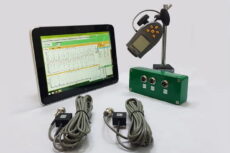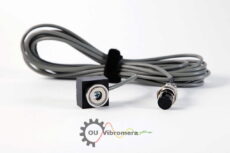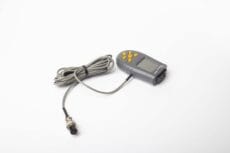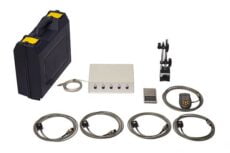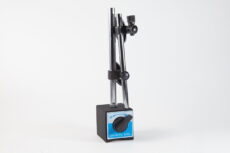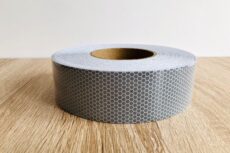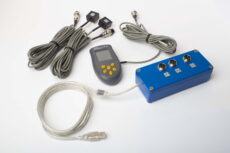अपने हाथों से मशीनों को संतुलित करना
संपादक और अनुवादक: निकोलाई एंड्रीविच शेल्कोवेंको और चैटजीपीटी
पेशेवर स्तर की बैलेंसिंग मशीन बनाने के लिए व्यापक तकनीकी मार्गदर्शिका। सॉफ्ट बेयरिंग बनाम हार्ड बेयरिंग डिज़ाइन, स्पिंडल गणना, सपोर्ट सिस्टम और माप उपकरण एकीकरण के बारे में जानें।.
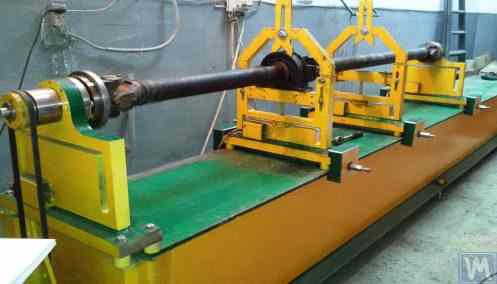
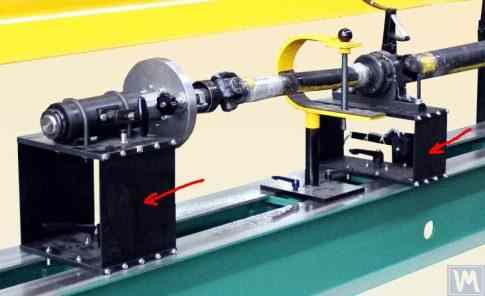
Table of Contents
1. Introduction
(Why was there a need to write this work?)
एलएलसी "किनेमेटिक्स" (वाइब्रोमेरा) द्वारा निर्मित संतुलन उपकरणों की खपत संरचना के विश्लेषण से पता चलता है कि लगभग 301टीपी3टी उपकरण संतुलन मशीनों और/या स्टैंडों के लिए स्थिर मापन और गणना प्रणालियों के रूप में उपयोग के लिए खरीदे जाते हैं। हमारे उपकरणों के उपभोक्ताओं (ग्राहकों) के दो समूह पहचाने जा सकते हैं।.
The first group includes enterprises that specialize in the mass production of balancing machines and selling them to external customers. These enterprises employ highly qualified specialists with deep knowledge and extensive experience in designing, manufacturing, and operating various types of balancing machines. The challenges that arise in interactions with this group of consumers are most often related to adapting our measuring systems and software to existing or newly developed machines, without addressing issues of their structural execution.
The second group consists of consumers who develop and manufacture machines (stands) for their own needs. This approach is mostly explained by the desire of independent manufacturers to reduce their own production costs, which in some cases can decrease by two to three times or more. This group of consumers often lacks proper experience in creating machines and typically relies on the use of common sense, information from the internet, and any available analogs in their work.
Interacting with them raises many questions, which, in addition to additional information about the measuring systems of balancing machines, cover a wide range of issues related to the structural execution of the machines, methods of their installation on the foundation, selection of drives, and achieving proper balancing accuracy, etc.
स्वतंत्र रूप से बैलेंसिंग मशीन बनाने के मुद्दों में हमारे उपभोक्ताओं के एक बड़े समूह द्वारा दिखाई गई महत्वपूर्ण रुचि को ध्यान में रखते हुए, एलएलसी "किनेमेटिक्स" (वाइब्रोमेरा) के विशेषज्ञों ने सबसे अधिक पूछे जाने वाले प्रश्नों पर टिप्पणियों और सिफारिशों के साथ एक संकलन तैयार किया है।.
2. Types of Balancing Machines (Stands) and Their Design Features
एक बैलेंसिंग मशीन एक तकनीकी उपकरण है जिसे विभिन्न उद्देश्यों के लिए रोटरों के स्थैतिक या गतिशील असंतुलन को दूर करने के लिए डिज़ाइन किया गया है। इसमें एक ऐसा तंत्र शामिल होता है जो संतुलित रोटर को एक निर्दिष्ट घूर्णन आवृत्ति तक त्वरित करता है और एक विशेष मापन और गणना प्रणाली होती है जो रोटर के असंतुलन की भरपाई के लिए आवश्यक सुधारात्मक भारों के द्रव्यमान और स्थान का निर्धारण करती है।.
मशीन के यांत्रिक भाग की संरचना में आमतौर पर एक बेडफ्रेम होता है जिस पर सपोर्ट पोस्ट (बेयरिंग) लगे होते हैं। इनका उपयोग संतुलित उत्पाद (रोटर) को माउंट करने के लिए किया जाता है और इनमें रोटर को घुमाने के लिए एक ड्राइव भी शामिल होती है। संतुलन प्रक्रिया के दौरान, जो उत्पाद के घूमते समय की जाती है, मापन प्रणाली के सेंसर (जिनका प्रकार मशीन के डिज़ाइन पर निर्भर करता है) या तो बेयरिंग में कंपन या बेयरिंग पर लगने वाले बल को रिकॉर्ड करते हैं।.
The data obtained in this manner allows for determining the masses and installation locations of the corrective weights necessary to compensate for the imbalance.
Currently, two types of balancing machine (stand) designs are most prevalent:
- Soft Bearing machines (with flexible supports);
- Hard Bearing machines (with rigid supports).
2.1. Soft Bearing Machines and Stands
The fundamental feature of Soft Bearing balancing machines (stands) is that they have relatively flexible supports, made on the basis of spring suspensions, spring-mounted carriages, flat or cylindrical spring supports, etc. The natural frequency of these supports is at least 2-3 times lower than the rotation frequency of the balanced rotor mounted on them. A classic example of the structural execution of flexible Soft Bearing supports can be seen in the support of the machine model DB-50, a photograph of which is shown in Figure 2.1.
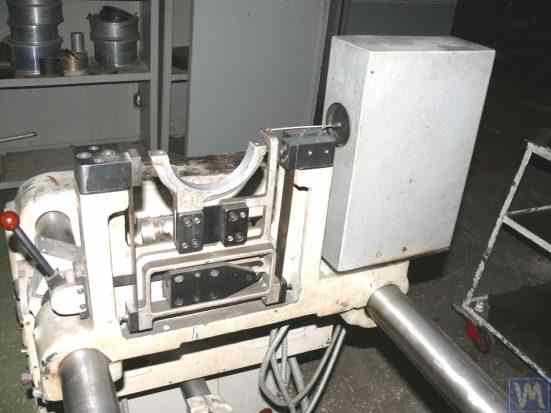
Figure 2.1. Support of the balancing machine model DB-50.
As shown in Figure 2.1, the movable frame (slider) 2 is attached to the stationary posts 1 of the support using a suspension on strip springs 3. Under the influence of the centrifugal force caused by the imbalance of the rotor installed on the support, the carriage (slider) 2 can perform horizontal oscillations relative to the stationary post 1, which are measured using a vibration sensor.
The structural execution of this support ensures achieving a low natural frequency of carriage oscillations, which can be around 1-2 Hz. This allows for the balancing of the rotor over a wide range of its rotational frequencies, starting from 200 RPM. This feature, along with the relative simplicity of manufacturing such supports, makes this design attractive to many of our consumers who manufacture balancing machines for their own needs of various purposes.
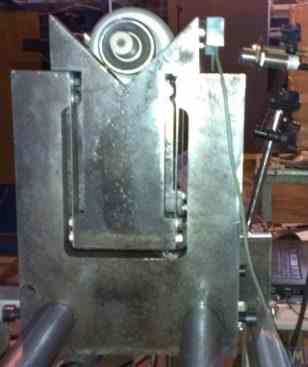
चित्र 2.2. "पॉलिमर लिमिटेड", मखाचकला द्वारा निर्मित बैलेंसिंग मशीन का सॉफ्ट बेयरिंग सपोर्ट।
चित्र 2.2 में मखाचकला स्थित "पॉलिमर लिमिटेड" में आंतरिक आवश्यकताओं के लिए निर्मित सस्पेंशन स्प्रिंग से बने सपोर्ट वाली सॉफ्ट बेयरिंग बैलेंसिंग मशीन की तस्वीर दिखाई गई है। यह मशीन पॉलिमर सामग्री के उत्पादन में उपयोग होने वाले रोलर्स को संतुलित करने के लिए डिज़ाइन की गई है।.
Figure 2.3 features a photograph of a balancing machine with a similar strip suspension for the carriage, intended for balancing specialized tools.
Figures 2.4.a and 2.4.b show photographs of a homemade Soft Bearing machine for balancing drive shafts, whose supports are also made using strip suspension springs.
Figure 2.5 यह तस्वीर टर्बोचार्जर को संतुलित करने के लिए डिज़ाइन की गई सॉफ्ट बेयरिंग मशीन को दर्शाती है, जिसके कैरिज के सपोर्ट भी स्ट्रिप स्प्रिंग पर लगे हुए हैं। सेंट पीटर्सबर्ग के ए. शाहगुनयान के निजी उपयोग के लिए बनाई गई यह मशीन "बैलेंसेट 1" मापन प्रणाली से सुसज्जित है।.
According to the manufacturer (see Fig. 2.6), this machine provides the capability to balance turbines with residual unbalance not exceeding 0.2 g*mm.
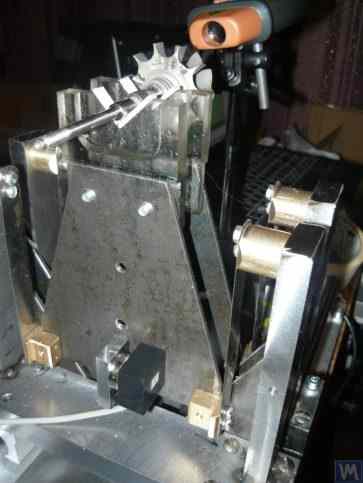
Figure 2.3. Soft Bearing Machine for Balancing Tools with Support Suspension on Strip Springs
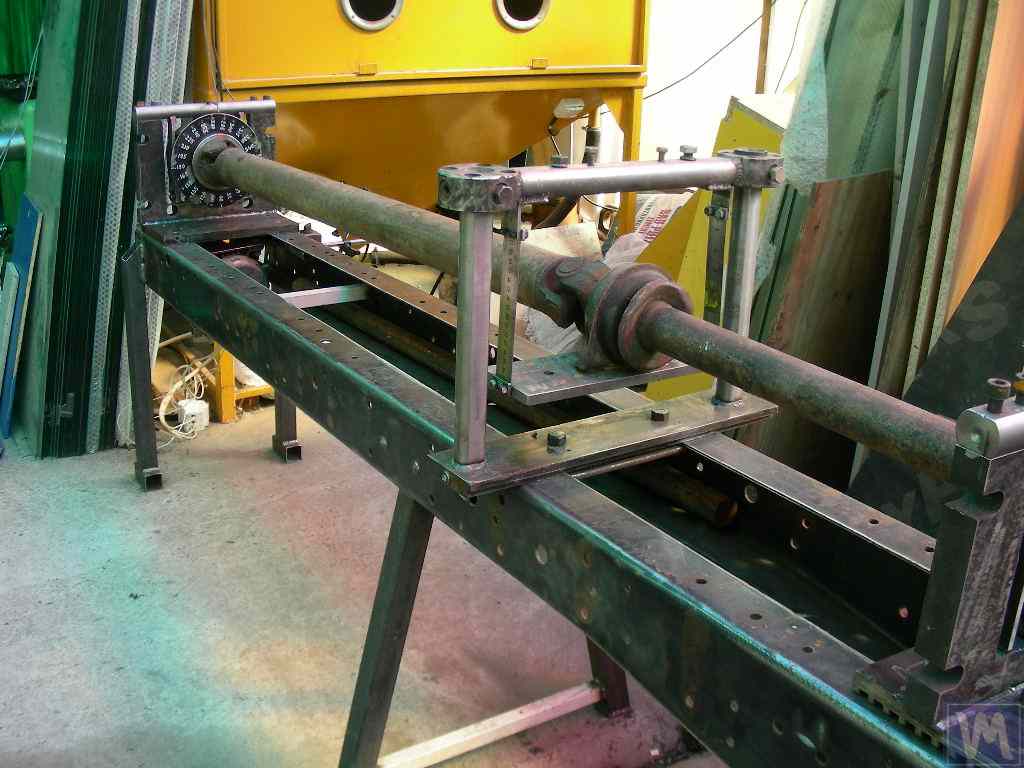
Figure 2.4.a. Soft Bearing Machine for Balancing Drive Shafts (Machine Assembled)
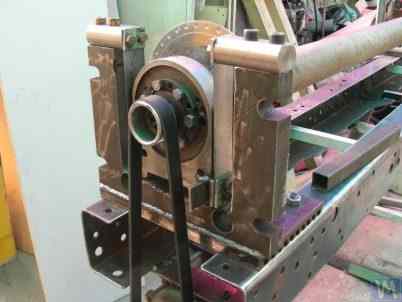
Figure 2.4.b. Soft Bearing Machine for Balancing Drive Shafts with Carriage Supports Suspended on Strip Springs. (Leading Spindle Support with Spring Strip Suspension)
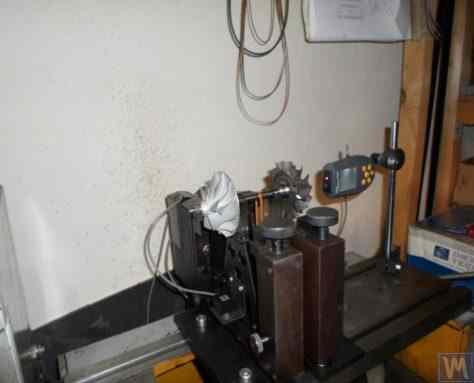
Figure 2.5. Soft Bearing Machine for Balancing Turbochargers with Supports on Strip Springs, Manufactured by A. Shahgunyan (St. Petersburg)
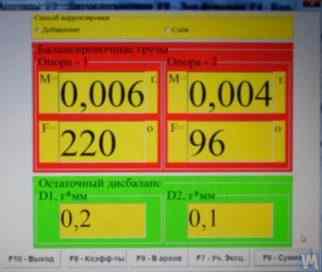
चित्र 2.6. ए. शाहगुनियान की मशीन पर टरबाइन रोटर बैलेंसिंग के परिणामों को दर्शाने वाले 'बैलेंससेट 1' मापन प्रणाली की स्क्रीन कॉपी।
In addition to the classic version of the Soft Bearing balancing machine supports discussed above, other structural solutions have also become widespread.
Figure 2.7 and 2.8 ड्राइव शाफ्ट के लिए बैलेंसिंग मशीनों की तस्वीरें प्रदर्शित की गई हैं, जिनके सपोर्ट फ्लैट (प्लेट) स्प्रिंग पर आधारित हैं। ये मशीनें क्रमशः निजी उद्यम "डेर्गाचेवा" और एलएलसी "टैटकार्डन" ("काइनेटिक्स-एम") की निजी आवश्यकताओं के लिए निर्मित की गई थीं।.
इस प्रकार के सपोर्ट वाली सॉफ्ट बेयरिंग बैलेंसिंग मशीनों को इनकी अपेक्षाकृत सरलता और निर्माण में आसानी के कारण शौकिया निर्माता अक्सर बनाते हैं। ये प्रोटोटाइप आमतौर पर या तो "के. शेंक" की वीबीआरएफ श्रृंखला की मशीनें होती हैं या इसी तरह की घरेलू स्तर पर निर्मित मशीनें होती हैं।.
The machines shown in Figures 2.7 and 2.8 are designed for balancing two-support, three-support, and four-support drive shafts. They have a similar construction, including:
- a welded bedframe 1, based on two I-beams connected by cross ribs;
- a stationary (front) spindle support 2;
- a movable (rear) spindle support 3;
- one or two movable (intermediate) supports 4. Supports 2 and 3 house spindle units 5 and 6, intended for mounting the balanced drive shaft 7 on the machine.
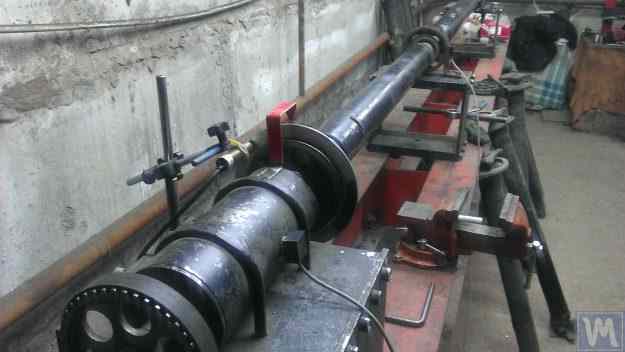
चित्र 2.7. निजी उद्यम "डेर्गाचेवा" द्वारा निर्मित ड्राइव शाफ्ट को संतुलित करने वाली सॉफ्ट बेयरिंग मशीन, जिसमें फ्लैट (प्लेट) स्प्रिंग पर सपोर्ट लगे हैं।
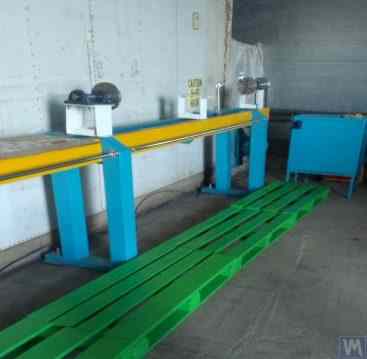
चित्र 2.8. एलएलसी "टैटकार्डन" ("काइनेटिक्स-एम") द्वारा निर्मित ड्राइव शाफ्ट को संतुलित करने वाली सॉफ्ट बेयरिंग मशीन, जिसमें फ्लैट स्प्रिंग्स पर सपोर्ट लगे हैं।
Vibration sensors 8 are installed on all supports, which are used to measure the transverse oscillations of the supports. The leading spindle 5, mounted on support 2, is rotated by an electric motor via a belt drive.
Figures 2.9.a and 2.9.b show photographs of the support of the balancing machine, which is based on flat springs.
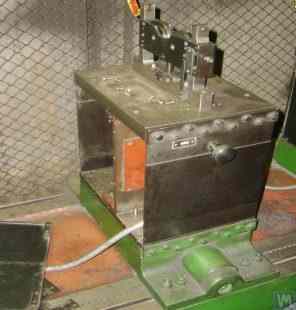
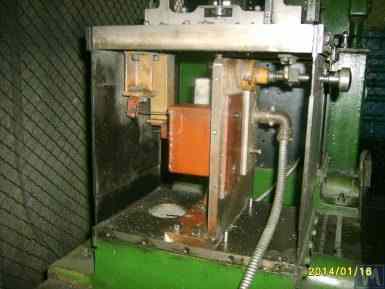
Figure 2.9. Soft Bearing Balancing Machine Support with Flat Springs
- a) Side view;
- b) Front view
Given that amateur manufacturers frequently use such supports in their designs, it is useful to examine the features of their construction in more detail. As shown in Figure 2.9.a, this support consists of three main components:
- Lower support plate 1: For the front spindle support, the plate is rigidly attached to the guides; for intermediate supports or rear spindle supports, the lower plate is designed as a carriage that can move along the frame guides.
- Upper support plate 2, on which the support units are mounted (roller supports 4, spindles, intermediate bearings, etc.).
- Two flat springs 3, connecting the lower and upper bearing plates.
To prevent the risk of increased vibration of the supports during operation, which can occur during the acceleration or deceleration of the balanced rotor, the supports may include a locking mechanism (see Fig. 2.9.b). This mechanism consists of a rigid bracket 5, which can be engaged by an eccentric lock 6 connected to one of the flat springs of the support. When the lock 6 and bracket 5 are engaged, the support is locked, eliminating the risk of increased vibration during acceleration and deceleration.
When designing supports made with flat (plate) springs, the machine manufacturer must assess the frequency of their natural oscillations, which depends on the stiffness of the springs and the mass of the balanced rotor. Knowing this parameter allows the designer to consciously choose the range of operational rotational frequencies of the rotor, avoiding the danger of resonant oscillations of the supports during balancing.
Recommendations for calculating and experimentally determining the natural frequencies of oscillations of supports, as well as other components of balancing machines, are discussed in Section 3.
As noted earlier, the simplicity and manufacturability of the support design using flat (plate) springs attract amateur developers of balancing machines for various purposes, including machines for balancing crankshafts, automotive turbocharger rotors, etc.
उदाहरण के तौर पर, चित्र 2.10.a और 2.10.b में टर्बोचार्जर रोटर्स को संतुलित करने के लिए डिज़ाइन की गई मशीन का एक सामान्य दृश्य रेखाचित्र प्रस्तुत किया गया है। यह मशीन पेन्ज़ा स्थित एलएलसी "सूराटर्बो" में निर्मित है और वहीं आंतरिक आवश्यकताओं के लिए उपयोग की जाती है।.
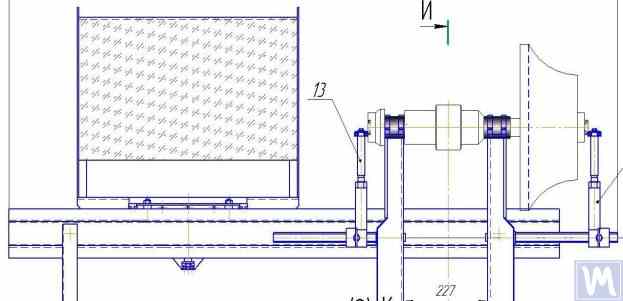
2.10.a. Machine for Balancing Turbocharger Rotors (Side View)
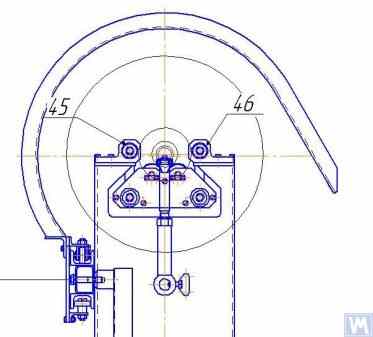
2.10.b. Machine for Balancing Turbocharger Rotors (View from the Front Support Side)
In addition to the previously discussed Soft Bearing balancing machines, relatively simple Soft Bearing stands are sometimes created. These stands allow for high-quality balancing of rotary mechanisms for various purposes with minimal costs.
नीचे ऐसे कई स्टैंडों की समीक्षा की गई है, जो बेलनाकार संपीड़न स्प्रिंगों पर टिकी एक सपाट प्लेट (या फ्रेम) के आधार पर निर्मित हैं। इन स्प्रिंगों का चयन आमतौर पर इस प्रकार किया जाता है कि संतुलन तंत्र स्थापित प्लेट के दोलनों की प्राकृतिक आवृत्ति, संतुलन के दौरान इस तंत्र के रोटर की घूर्णन आवृत्ति से 2 से 3 गुना कम हो।.
Figure 2.11 shows a photograph of a stand for balancing abrasive wheels, manufactured for the in-house production by P. Asharin.
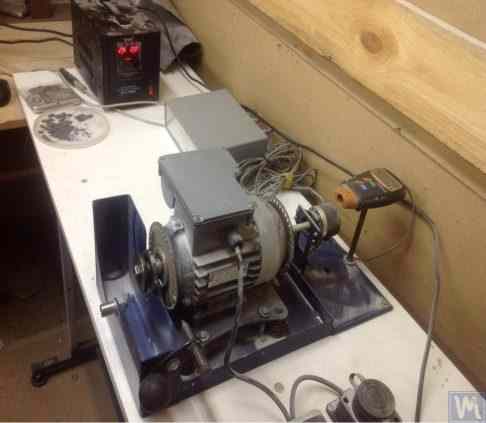
Figure 2.11. Stand for Balancing Abrasive Wheels
The stand consists of the following main components:
- Plate 1, mounted on four cylindrical springs 2;
- Electric motor 3, whose rotor also serves as the spindle, on which a mandrel 4 is mounted, used for installing and securing the abrasive wheel on the spindle.
इस स्टैंड की एक प्रमुख विशेषता इलेक्ट्रिक मोटर के रोटर के घूर्णन कोण के लिए पल्स सेंसर 5 का समावेश है, जिसका उपयोग स्टैंड ("बैलेंसेट 2सी") की मापन प्रणाली के हिस्से के रूप में अपघर्षक पहिया से सुधारात्मक द्रव्यमान को हटाने के लिए कोणीय स्थिति निर्धारित करने के लिए किया जाता है।.
Figure 2.12 यह तस्वीर वैक्यूम पंपों को संतुलित करने के लिए उपयोग किए जाने वाले स्टैंड को दर्शाती है। इस स्टैंड को जेएससी "मेजरमेंट प्लांट" द्वारा ऑर्डर पर विकसित किया गया था।.
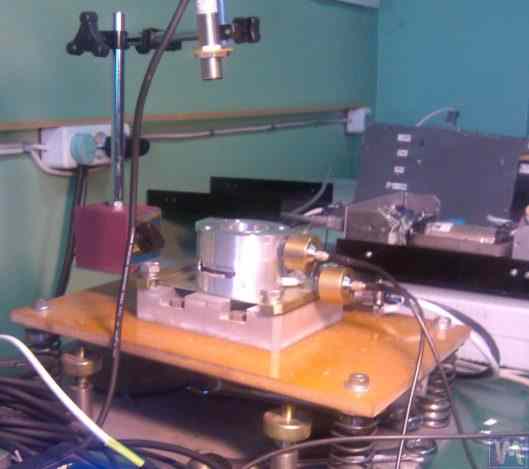
चित्र 2.12. जेएससी "मापन संयंत्र" द्वारा निर्मित वैक्यूम पंपों के संतुलन के लिए स्टैंड।"
The basis of this stand also uses Plate 1, mounted on cylindrical springs 2. On Plate 1, a vacuum pump 3 is installed, which has its own electric drive capable of varying speeds widely from 0 to 60,000 RPM. Vibration sensors 4 are mounted on the pump casing, which are used to measure vibrations in two different sections at different heights.
पंप रोटर के घूर्णन कोण के साथ कंपन मापन प्रक्रिया के सिंक्रनाइज़ेशन के लिए, स्टैंड पर लेजर फेज एंगल सेंसर 5 का उपयोग किया जाता है। ऐसे स्टैंड की बाहरी संरचना देखने में सरल लगती है, लेकिन यह पंप के इम्पेलर का बहुत उच्च गुणवत्ता वाला संतुलन प्राप्त करने में सक्षम बनाता है।.
उदाहरण के लिए, उप-क्रांतिक घूर्णी आवृत्तियों पर, पंप रोटर का अवशिष्ट असंतुलन आईएसओ 1940-1-2007 "कंपन। कठोर रोटरों की संतुलन गुणवत्ता के लिए आवश्यकताएँ। भाग 1. अनुमेय असंतुलन का निर्धारण" के अनुसार संतुलन गुणवत्ता वर्ग G0.16 के लिए निर्धारित आवश्यकताओं को पूरा करता है।"
The residual vibration of the pump casing achieved during balancing at rotational speeds up to 8,000 RPM does not exceed 0.01 mm/sec.
Balancing stands manufactured according to the scheme described above are also effective in balancing other mechanisms, such as fans. Examples of stands designed for balancing fans are shown in Figures 2.13 and 2.14.
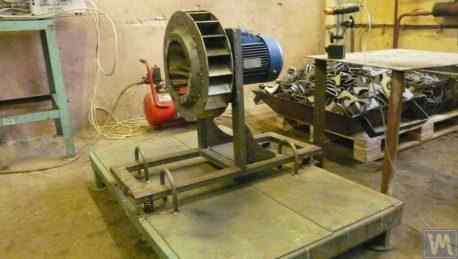
Figure 2.13. Stand for Balancing Fan Impellers
ऐसे स्टैंड पर पंखों का संतुलन काफी उच्च गुणवत्ता का होता है। "अटलांट-प्रोजेक्ट" एलएलसी के विशेषज्ञों के अनुसार, "काइनेमेटिक्स" एलएलसी की सिफारिशों के आधार पर उनके द्वारा डिजाइन किए गए स्टैंड (चित्र 2.14 देखें) पर पंखों का संतुलन करते समय अवशिष्ट कंपन का स्तर 0.8 मिमी/सेकंड प्राप्त हुआ। यह आईएसओ 31350-2007 "कंपन। औद्योगिक पंखे। उत्पादित कंपन और संतुलन गुणवत्ता के लिए आवश्यकताएँ" के अनुसार श्रेणी बीवी5 के पंखों के लिए निर्धारित सहनशीलता से तीन गुना से भी अधिक बेहतर है।"
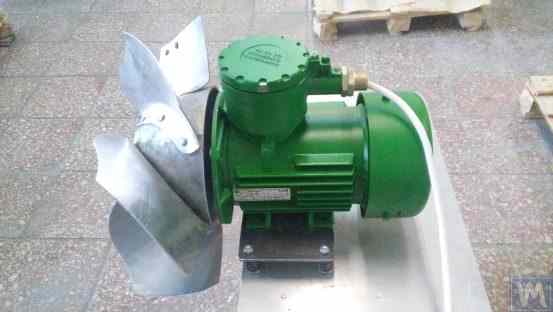
चित्र 2.14. पोडोलस्क स्थित "अटलांट-प्रोजेक्ट" एलएलसी द्वारा निर्मित विस्फोट-रोधी उपकरणों के लिए पंखे के इम्पेलर को संतुलित करने वाला स्टैंड।
जेएससी "लिसांट फैन फैक्ट्री" में प्राप्त समान आंकड़ों से पता चलता है कि डक्ट पंखों के सीरियल उत्पादन में उपयोग किए जाने वाले ऐसे स्टैंड लगातार 0.1 मिमी/सेकंड से अधिक अवशिष्ट कंपन सुनिश्चित नहीं करते हैं।.
2.2. Hard Bearing Machines
Hard Bearing balancing machines differ from the previously discussed Soft Bearing machines in the design of their supports. Their supports are made in the form of rigid plates with intricate slots (cut-outs). The natural frequencies of these supports significantly (at least 2-3 times) exceed the maximum rotational frequency of the rotor balanced on the machine.
Hard Bearing machines are more versatile than Soft Bearing ones, as they typically allow for high-quality balancing of rotors over a wider range of their mass and dimensional characteristics. An important advantage of these machines is also that they enable high-precision balancing of rotors at relatively low rotational speeds, which can be within the range of 200-500 RPM and lower.
Figure 2.15 चित्र में "के. शेंक" द्वारा निर्मित एक विशिष्ट हार्ड बेयरिंग बैलेंसिंग मशीन का चित्र दिखाया गया है। इस चित्र से स्पष्ट है कि जटिल खांचों से बने सपोर्ट के अलग-अलग हिस्सों की कठोरता भिन्न-भिन्न है। रोटर असंतुलन के बलों के प्रभाव में, सपोर्ट के कुछ हिस्सों में अन्य हिस्सों की तुलना में विकृति (विस्थापन) हो सकती है। (चित्र 2.15 में, सपोर्ट के अधिक कठोर भाग को लाल बिंदीदार रेखा से दर्शाया गया है, और इसके अपेक्षाकृत लचीले भाग को नीले रंग में दिखाया गया है)।.
To measure the said relative deformations, Hard Bearing machines can use either force sensors or highly sensitive vibration sensors of various types, including non-contact vibration displacement sensors.
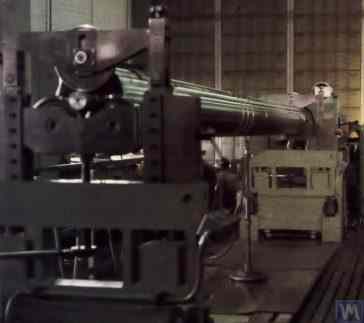
चित्र 2.15. "के. शेंक" द्वारा निर्मित हार्ड बेयरिंग बैलेंसिंग मशीन"
"बैलेंसेट" श्रृंखला के उपकरणों के लिए ग्राहकों से प्राप्त अनुरोधों के विश्लेषण से पता चलता है कि आंतरिक उपयोग के लिए हार्ड बेयरिंग मशीनों के निर्माण में रुचि लगातार बढ़ रही है। घरेलू बैलेंसिंग मशीनों की डिज़ाइन विशेषताओं के बारे में विज्ञापन संबंधी जानकारी के व्यापक प्रसार से इसमें मदद मिली है, जिनका उपयोग शौकिया निर्माता अपने स्वयं के विकास के लिए एनालॉग (या प्रोटोटाइप) के रूप में करते हैं।.
आइए "बैलेंसेट" श्रृंखला के उपकरणों के कई उपभोक्ताओं की आंतरिक आवश्यकताओं के लिए निर्मित हार्ड बेयरिंग मशीनों के कुछ प्रकारों पर विचार करें।.
Figures 2.16.a – 2.16.d चित्र में ड्राइव शाफ्ट को संतुलित करने के लिए डिज़ाइन की गई हार्ड बेयरिंग मशीन की तस्वीरें दिखाई गई हैं, जिसका निर्माण एन. ओब्येदकोव (मैग्निटोगोर्स्क शहर) द्वारा किया गया था। जैसा कि चित्र 2.16.a में देखा जा सकता है, मशीन में एक कठोर फ्रेम 1 होता है, जिस पर सपोर्ट 2 (दो स्पिंडल और दो मध्यवर्ती) लगे होते हैं। मशीन का मुख्य स्पिंडल 3 एक बेल्ट ड्राइव के माध्यम से एक अतुल्यकालिक विद्युत मोटर 4 द्वारा घुमाया जाता है। विद्युत मोटर 4 की घूर्णन गति को नियंत्रित करने के लिए एक आवृत्ति नियंत्रक 6 का उपयोग किया जाता है। मशीन "बैलेंससेट 4" मापन और गणना प्रणाली 5 से सुसज्जित है, जिसमें एक मापन इकाई, एक कंप्यूटर, चार बल सेंसर और एक फेज एंगल सेंसर शामिल हैं (सेंसर चित्र 2.16.a में नहीं दिखाए गए हैं)।.
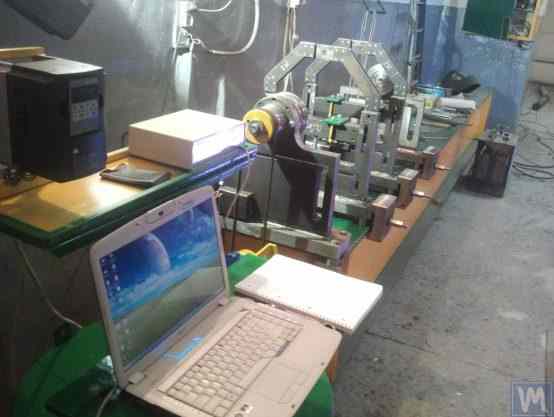
Figure 2.16.a. Hard Bearing Machine for Balancing Drive Shafts, Manufactured by N. Obyedkov (Magnitogorsk)
Figure 2.16.b shows a photograph of the front support of the machine with the leading spindle 3, which is driven, as previously noted, by a belt drive from an asynchronous electric motor 4. This support is rigidly mounted on the frame.
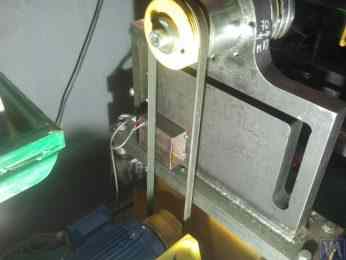
Figure 2.16.b. Front (Leading) Spindle Support.
Figure 2.16.c features a photograph of one of the two movable intermediate supports of the machine. This support rests on slides 7, allowing for its longitudinal movement along the frame guides. This support includes a special device 8, designed for installing and adjusting the height of the intermediate bearing of the balanced drive shaft.
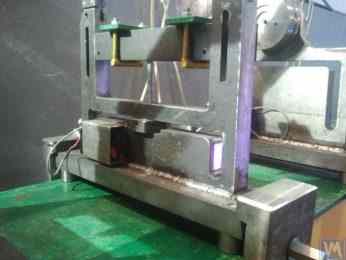
Figure 2.16.c. Intermediate Movable Support of the Machine
Figure 2.16.d इसमें पीछे वाले (चालित) स्पिंडल सपोर्ट की एक तस्वीर दिखाई गई है, जो मध्यवर्ती सपोर्ट की तरह, मशीन फ्रेम के गाइड के साथ गति की अनुमति देता है।.
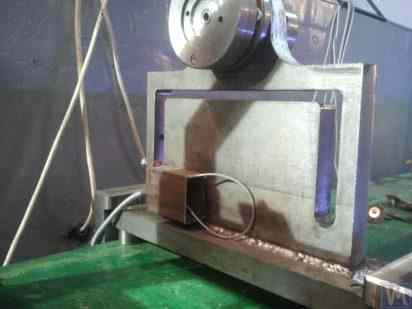
Figure 2.16.d. Rear (Driven) Spindle Support.
All the supports discussed above are vertical plates mounted on flat bases. The plates feature T-shaped slots (see Fig. 2.16.d), which divide the support into an inner part 9 (more rigid) and an outer part 10 (less rigid). The differing stiffness of the inner and outer parts of the support may result in relative deformation of these parts under the forces of unbalance from the balanced rotor.
Force sensors are typically used to measure the relative deformation of the supports in homemade machines. An example of how a force sensor is installed on a Hard Bearing balancing machine support is shown in Figure 2.16.e. As seen in this figure, the force sensor 11 is pressed against the side surface of the inner part of the support by a bolt 12, which passes through a threaded hole in the outer part of the support.
To ensure even pressure of bolt 12 across the entire plane of the force sensor 11, a flat washer 13 is placed between it and the sensor.
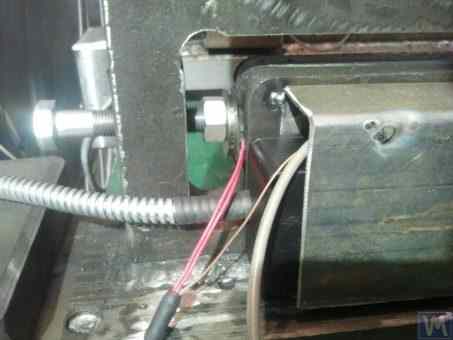
Figure 2.16.d. Example of Force Sensor Installation on a Support.
मशीन के संचालन के दौरान, संतुलित रोटर से उत्पन्न असंतुलन बल, सपोर्ट इकाइयों (स्पिंडल या मध्यवर्ती बियरिंग) के माध्यम से सपोर्ट के बाहरी भाग पर कार्य करते हैं, जिससे बाहरी भाग रोटर के घूर्णन की आवृत्ति पर अपने आंतरिक भाग के सापेक्ष चक्रीय रूप से गतिमान (विकृत) होने लगता है। इसके परिणामस्वरूप, सेंसर 11 पर एक परिवर्तनशील बल कार्य करता है, जो असंतुलन बल के समानुपाती होता है। इसके प्रभाव से, बल सेंसर के आउटपुट पर रोटर के असंतुलन के परिमाण के समानुपाती एक विद्युत संकेत उत्पन्न होता है।.
सभी सपोर्टों पर लगे फोर्स सेंसर से प्राप्त सिग्नल मशीन के मापन और गणना प्रणाली में भेजे जाते हैं, जहां उनका उपयोग सुधारात्मक भार के मापदंडों को निर्धारित करने के लिए किया जाता है।.
Figure 2.17.a. इसमें स्क्रू शाफ्ट को संतुलित करने के लिए उपयोग की जाने वाली एक विशेष हार्ड बेयरिंग मशीन की तस्वीर दिखाई गई है। यह मशीन एलएलसी "उफातवरदोस्प्लाव" में आंतरिक उपयोग के लिए निर्मित की गई थी।.
As seen in the figure, the spin-up mechanism of the machine has a simplified construction, which consists of the following main components:
- Welded frame 1, serving as the bed;
- Two stationary supports 2, rigidly fixed to the frame;
- Electric motor 3, which drives the balanced shaft (screw) 5 via a belt drive 4.
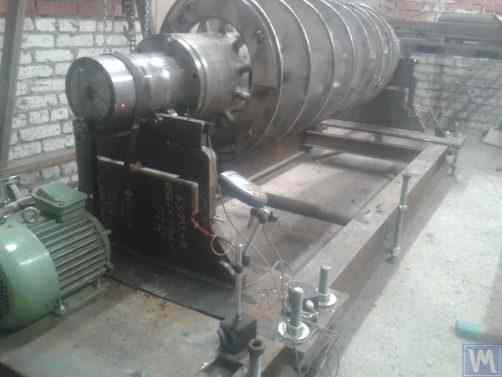
चित्र 2.17.a. स्क्रू शाफ्ट को संतुलित करने के लिए हार्ड बेयरिंग मशीन, एलएलसी "उफातवेरदोस्प्लाव" द्वारा निर्मित।"
The supports 2 of the machine are vertically installed steel plates with T-shaped slots. At the top of each support, there are support rollers manufactured using rolling bearings, on which the balanced shaft 5 rotates.
रोटर असंतुलन के कारण उत्पन्न होने वाले सपोर्ट के विरूपण को मापने के लिए, सपोर्ट के खांचों में बल सेंसर 6 (चित्र 2.17.b देखें) लगाए जाते हैं। ये सेंसर "बैलेंससेट 1" उपकरण से जुड़े होते हैं, जिसका उपयोग इस मशीन पर मापन और गणना प्रणाली के रूप में किया जाता है।.
मशीन के स्पिन-अप तंत्र की सापेक्षिक सरलता के बावजूद, यह पेंचों के पर्याप्त उच्च-गुणवत्ता वाले संतुलन को सक्षम बनाता है, जैसा कि चित्र 2.17.ए में देखा गया है, जिसमें एक जटिल पेचदार सतह होती है।.
एलएलसी "उफातवेरदोस्प्लाव" के अनुसार, इस मशीन पर संतुलन प्रक्रिया के दौरान पेंच का प्रारंभिक असंतुलन लगभग 50 गुना कम हो गया था।.
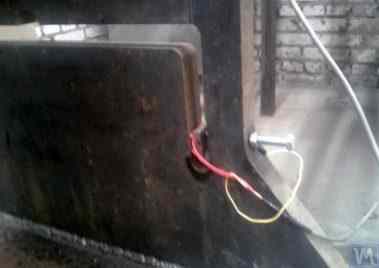
Figure 2.17.b. Hard Bearing Machine Support for Balancing Screw Shafts with Force Sensor
स्क्रू के पहले तल में प्राप्त अवशिष्ट असंतुलन 3552 ग्राम*मिमी (185 मिमी त्रिज्या पर 19.2 ग्राम) और दूसरे तल में 2220 ग्राम*मिमी (185 मिमी त्रिज्या पर 12.0 ग्राम) था। 500 किलोग्राम वजन वाले और 3500 आरपीएम की घूर्णन आवृत्ति पर चलने वाले रोटर के लिए, यह असंतुलन ISO 1940-1-2007 के अनुसार G6.3 वर्ग के अनुरूप है, जो इसके तकनीकी दस्तावेज़ में निर्धारित आवश्यकताओं को पूरा करता है।.
एस.वी. मोरोज़ोव द्वारा एक मौलिक डिज़ाइन (चित्र 2.18 देखें) प्रस्तावित किया गया था, जिसमें अलग-अलग आकार की दो हार्ड बेयरिंग बैलेंसिंग मशीनों के लिए एक साथ सपोर्ट लगाने हेतु एक ही आधार का उपयोग किया जाता है। इस तकनीकी समाधान के स्पष्ट लाभ, जो निर्माता की उत्पादन लागत को कम करने में सहायक हैं, इस प्रकार हैं:
- Saving production space;
- Use of one electric motor with a variable frequency drive for operating two different machines;
- Use of one measuring system for operating two different machines.

चित्र 2.18. हार्ड बेयरिंग बैलेंसिंग मशीन ("टैंडम"), एस.वी. मोरोज़ोव द्वारा निर्मित
3. Requirements for the Construction of Basic Units and Mechanisms of Balancing Machines
3.1. Bearings
3.1.1. Theoretical Foundations of Bearing Design
पिछले खंड में, संतुलन मशीनों के लिए सॉफ्ट बेयरिंग और हार्ड बेयरिंग सपोर्ट के मुख्य डिज़ाइन निष्पादन पर विस्तार से चर्चा की गई थी। इन सपोर्टों के डिज़ाइन और निर्माण के दौरान डिज़ाइनरों को जिन महत्वपूर्ण मापदंडों पर विचार करना चाहिए, उनमें से एक है उनकी दोलन की प्राकृतिक आवृत्तियाँ। यह महत्वपूर्ण है क्योंकि मशीन के मापन और गणना प्रणालियों द्वारा सुधारात्मक भार के मापदंडों की गणना के लिए सपोर्टों के कंपन (चक्रीय विरूपण) के आयाम के साथ-साथ कंपन की अवस्था का मापन भी आवश्यक है।.
यदि किसी आधार की प्राकृतिक आवृत्ति संतुलित रोटर की घूर्णन आवृत्ति के साथ मेल खाती है (आधार अनुनाद), तो कंपन के आयाम और चरण का सटीक मापन व्यावहारिक रूप से असंभव है। संतुलित रोटर की घूर्णन आवृत्ति के फलन के रूप में आधार के दोलनों के आयाम और चरण में परिवर्तन दर्शाने वाले ग्राफ़ में यह स्पष्ट रूप से प्रदर्शित होता है (चित्र 3.1 देखें)।.
From these graphs, it follows that as the rotational frequency of the balanced rotor approaches the natural frequency of the support oscillations (i.e., when the ratio fp/fo is close to 1), there is a significant increase in amplitude associated with the resonance oscillations of the support (see Fig. 3.1.a). Simultaneously, graph 3.1.b shows that in the resonance zone, there is a sharp change in the phase angle ∆F°, which can reach up to 180°.
In other words, when balancing any mechanism in the resonance zone, even small changes in its rotation frequency can lead to significant instability in the measurement results of amplitude and phase of its vibration, leading to errors in calculating the parameters of corrective weights and negatively affecting the quality of balancing.
उपरोक्त ग्राफ पहले की सिफारिशों की पुष्टि करते हैं कि हार्ड बेयरिंग मशीनों के लिए, रोटर की परिचालन आवृत्तियों की ऊपरी सीमा सपोर्ट की प्राकृतिक आवृत्ति, fo, से (कम से कम) 2-3 गुना कम होनी चाहिए। सॉफ्ट बेयरिंग मशीनों के लिए, संतुलित रोटर की अनुमेय परिचालन आवृत्तियों की निचली सीमा सपोर्ट की प्राकृतिक आवृत्ति से (कम से कम) 2-3 गुना अधिक होनी चाहिए।.
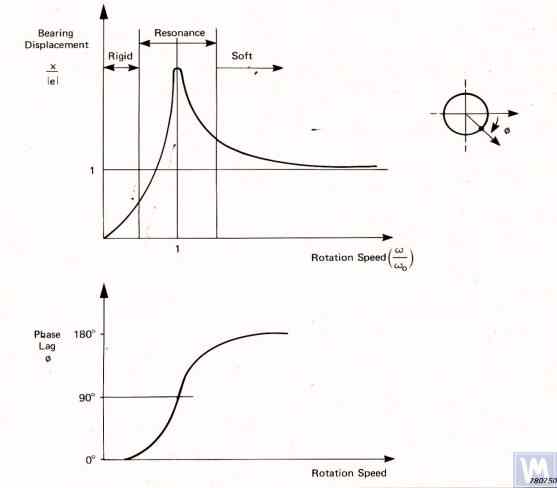
Figure 3.1. Graphs showing changes in relative amplitude and phase of vibrations of the balancing machine support as a function of rotational frequency changes.
- Ад – Amplitude of dynamic vibrations of the support;
- e = m*r / M - संतुलित रोटर का विशिष्ट असंतुलन;
- एम – Unbalanced mass of the rotor;
- M – Mass of the rotor;
- r – Radius at which the unbalanced mass is located on the rotor;
- fp – Rotational frequency of the rotor;
- fo – Natural frequency of vibrations of the support
Given the information presented, operating the machine in the resonance area of its supports (highlighted in red in Fig. 3.1) is not recommended. The graphs shown in Fig. 3.1 also demonstrate that for the same imbalances of the rotor, the actual vibrations of the Soft Bearing machine supports are significantly lower than those occurring on the Soft Bearing machine supports.
From this, it follows that sensors used to measure vibrations of supports in Hard Bearing machines must have higher sensitivity than those in Soft Bearing machines. This conclusion is well supported by the actual practice of using sensors, which shows that absolute vibration sensors (vibro-accelerometers and/or vibro-velocity sensors), successfully used in Soft Bearing balancing machines, often cannot achieve the necessary balancing quality on Hard Bearing machines.
On these machines, it is recommended to use relative vibration sensors, such as force sensors or highly sensitive displacement sensors.
3.1.2. Estimating Natural Frequencies of Supports Using Calculation Methods
A designer can perform an approximate (estimative) calculation of the natural frequency of a support fo using formula 3.1, by simplistically treating it as a vibrational system with one degree of freedom, which (see Fig. 2.19.a) is represented by a mass M, oscillating on a spring with stiffness K.
The mass M used in the calculation for a symmetric inter-bearing rotor can be approximated by formula 3.2.
जहां Mo सपोर्ट के गतिशील भाग का द्रव्यमान (किलोग्राम में) है; Mr संतुलित रोटर का द्रव्यमान (किलोग्राम में) है; n संतुलन में शामिल मशीन सपोर्ट की संख्या है।.
The stiffness K of the support is calculated using formula 3.3 based on the results of experimental studies that involve measuring the deformation ΔL of the support when it is loaded with a static force P (see Figs. 3.2.a and 3.2.b).
जहां ΔL मीटर में आधार का विरूपण है; P न्यूटन में स्थैतिक बल है।.
The magnitude of the loading force P can be measured using a force-measuring instrument (e.g., a dynamometer). The displacement of the support ΔL is determined using a device for measuring linear displacements (e.g., a dial indicator).
3.1.3. Experimental Methods for Determining Natural Frequencies of Supports
सपोर्ट की प्राकृतिक आवृत्तियों की गणना के लिए ऊपर बताई गई सरल विधि से महत्वपूर्ण त्रुटियाँ हो सकती हैं, इसलिए अधिकांश शौकिया डेवलपर इन मापदंडों को प्रायोगिक विधियों से निर्धारित करना पसंद करते हैं। इसके लिए वे आधुनिक कंपन मापन प्रणालियों, जैसे कि "बैलेंसेट" श्रृंखला के उपकरणों, की क्षमताओं का उपयोग करते हैं।.
3.1.3.1. Determining Natural Frequencies of Supports by Impact Excitation Method
The impact excitation method is the simplest and most common way to determine the natural frequency of vibrations of a support or any other machine component. It is based on the fact that when any object, such as a bell (see Fig. 3.3), is impact-excited, its response manifests as a gradually decaying vibrational response. The frequency of the vibrational signal is determined by the structural characteristics of the object and corresponds to the frequency of its natural vibrations. For impact excitation of vibrations, any heavy tool can be used, such as a rubber mallet or a regular mallet.
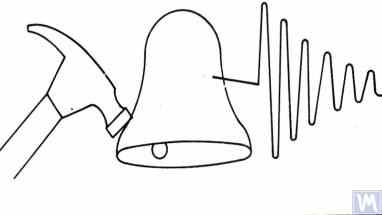
Figure 3.3. Diagram of Impact Excitation Used to Determine the Natural Frequencies of an Object
The mass of the hammer should approximately be 10% of the mass of the object being excited. To capture the vibrational response, a vibration sensor should be installed on the object under examination, with its measuring axis aligned with the direction of impact excitation. In some cases, a microphone from a noise measuring device may be used as a sensor to perceive the vibrational response of the object.
वस्तु के कंपन को सेंसर द्वारा विद्युत संकेत में परिवर्तित किया जाता है, जिसे बाद में स्पेक्ट्रम विश्लेषक जैसे मापन उपकरण के इनपुट में भेजा जाता है। यह उपकरण क्षीण होते कंपन की समय फलन और स्पेक्ट्रम को रिकॉर्ड करता है (चित्र 3.4 देखें), जिसके विश्लेषण से वस्तु के प्राकृतिक कंपन की आवृत्ति (आवृत्तियों) का निर्धारण किया जा सकता है।.

Figure 3.5. Program Interface Showing Time Function Graphs and Spectrum of Decaying Impact Vibrations of the Examined Structure
The analysis of the spectrum graph presented in Figure 3.5 (see the lower part of the work window) shows that the main component of the natural vibrations of the examined structure, determined with reference to the abscissa axis of the graph, occurs at a frequency of 9.5 Hz. This method can be recommended for studies of the natural vibrations of both Soft Bearing and Hard Bearing balancing machine supports.
3.1.3.2. Determining Natural Frequencies of Supports in Coasting Mode
कुछ मामलों में, सहारे की प्राकृतिक आवृत्तियों को "तटस्थ" कंपन के आयाम और चरण को चक्रीय रूप से मापकर निर्धारित किया जा सकता है। इस विधि को लागू करने में, जांच की जा रही मशीन पर लगे रोटर को पहले उसकी अधिकतम घूर्णन गति तक त्वरित किया जाता है, जिसके बाद उसका ड्राइव डिस्कनेक्ट कर दिया जाता है, और रोटर के असंतुलन से जुड़े विक्षोभ बल की आवृत्ति अधिकतम से धीरे-धीरे रुकने के बिंदु तक कम हो जाती है।.
In this case, the natural frequencies of supports can be determined by two characteristics:
- By a local jump in vibration amplitude observed in the resonance areas;
- By a sharp change (up to 180°) in the vibration phase observed in the zone of the amplitude jump.
"बैलेंसेट" श्रृंखला के उपकरणों में, "वाइब्रोमीटर" मोड ("बैलेंसेट 1") या "संतुलन, निगरानी" मोड ("बैलेंसेट 2C" और "बैलेंसेट 4") का उपयोग "तट पर" वस्तुओं की प्राकृतिक आवृत्तियों का पता लगाने के लिए किया जा सकता है, जिससे रोटर की घूर्णी आवृत्ति पर कंपन के आयाम और चरण का चक्रीय माप संभव हो पाता है।.
इसके अलावा, "बैलेंसेट 1" सॉफ़्टवेयर में एक विशेष "ग्राफ़्स. कोस्टिंग" मोड भी शामिल है, जो घूर्णन आवृत्ति में परिवर्तन के फलन के रूप में तट पर समर्थन कंपन के आयाम और चरण में परिवर्तन के ग्राफ़ बनाने की अनुमति देता है, जिससे अनुनाद के निदान की प्रक्रिया में काफी सुविधा होती है।.
It should be noted that, for obvious reasons (see section 3.1.1), the method of identifying natural frequencies of supports on the coast can only be used in the case of studying Soft Bearing balancing machines, where the working frequencies of rotor rotation significantly exceed the natural frequencies of supports in the transverse direction.
In the case of Hard Bearing machines, where the working frequencies of rotor rotation exciting the vibrations of supports on the coast are significantly below the natural frequencies of the supports, the use of this method is practically impossible.
3.1.4. Practical Recommendations for Designing and Manufacturing Supports for Balancing Machines
3.1.2. Calculating Natural Frequencies of Supports by Computational Methods
Calculations of the natural frequencies of supports using the above-discussed calculation scheme can be performed in two directions:
- In the transverse direction of the supports, which coincides with the direction of measuring their vibrations caused by the forces of rotor unbalance;
- In the axial direction, coinciding with the axis of rotation of the balanced rotor mounted on the machine supports.
ऊर्ध्वाधर दिशा में सपोर्ट की प्राकृतिक आवृत्तियों की गणना के लिए एक अधिक जटिल गणना तकनीक की आवश्यकता होती है, जिसमें (सपोर्ट और संतुलित रोटर के मापदंडों के अलावा) फ्रेम के मापदंडों और नींव पर मशीन की स्थापना की विशिष्टताओं को भी ध्यान में रखना होता है। इस प्रकाशन में इस विधि पर चर्चा नहीं की गई है। सूत्र 3.1 के विश्लेषण से कुछ सरल सुझाव प्राप्त होते हैं जिन्हें मशीन डिजाइनरों को अपने व्यावहारिक कार्यों में ध्यान में रखना चाहिए। विशेष रूप से, सपोर्ट की कठोरता और/या द्रव्यमान को बदलकर उसकी प्राकृतिक आवृत्ति को बदला जा सकता है। कठोरता बढ़ाने से सपोर्ट की प्राकृतिक आवृत्ति बढ़ती है, जबकि द्रव्यमान बढ़ाने से यह घटती है। इन परिवर्तनों का एक गैर-रैखिक, वर्ग-व्युत्क्रम संबंध होता है। उदाहरण के लिए, सपोर्ट की कठोरता को दोगुना करने से उसकी प्राकृतिक आवृत्ति केवल 1.4 गुना बढ़ती है। इसी प्रकार, सपोर्ट के गतिशील भाग के द्रव्यमान को दोगुना करने से उसकी प्राकृतिक आवृत्ति केवल 1.4 गुना घटती है।.
3.1.4.1. Soft Bearing Machines with Flat Plate Springs
ऊपर अनुभाग 2.1 में फ्लैट स्प्रिंग से बने बैलेंसिंग मशीन सपोर्ट के कई डिज़ाइन विविधताओं पर चर्चा की गई है और उन्हें चित्र 2.7 - 2.9 में दर्शाया गया है। हमारी जानकारी के अनुसार, ऐसे डिज़ाइन आमतौर पर ड्राइव शाफ्ट को संतुलित करने के लिए बनाई गई मशीनों में उपयोग किए जाते हैं।.
उदाहरण के तौर पर, आइए एक ग्राहक (एलएलसी "रोस्ट-सर्विस", सेंट पीटर्सबर्ग) द्वारा अपनी मशीन के सपोर्ट के निर्माण में उपयोग किए गए स्प्रिंग मापदंडों पर विचार करें। यह मशीन 2, 3 और 4-सपोर्ट ड्राइव शाफ्ट को संतुलित करने के लिए बनाई गई थी, जिनका द्रव्यमान 200 किलोग्राम से अधिक नहीं था। ग्राहक द्वारा चुनी गई मशीन के लीडिंग और ड्रिवन स्पिंडल के सपोर्ट में उपयोग किए गए स्प्रिंग के ज्यामितीय आयाम (ऊंचाई * चौड़ाई * मोटाई) क्रमशः 300*200*3 मिमी थे।.
भाररहित सपोर्ट की प्राकृतिक आवृत्ति, जिसे "बैलेंसेट 4" मशीन के मानक मापन प्रणाली का उपयोग करके प्रभाव उत्तेजना विधि द्वारा प्रयोगात्मक रूप से निर्धारित किया गया था, 11-12 हर्ट्ज़ पाई गई। सपोर्ट के कंपन की ऐसी प्राकृतिक आवृत्ति पर, संतुलन के दौरान संतुलित रोटर की अनुशंसित घूर्णन आवृत्ति 22-24 हर्ट्ज़ (1320-1440 आरपीएम) से कम नहीं होनी चाहिए।.
एक ही निर्माता द्वारा मध्यवर्ती सपोर्ट पर उपयोग किए गए फ्लैट स्प्रिंग के ज्यामितीय आयाम क्रमशः 200*200*3 मिमी थे। इसके अलावा, अध्ययनों से पता चला कि इन सपोर्ट की प्राकृतिक आवृत्तियाँ अधिक थीं, जो 13-14 हर्ट्ज तक पहुँचती थीं।.
परीक्षण परिणामों के आधार पर, मशीन निर्माताओं को स्पिंडल और मध्यवर्ती सपोर्ट की प्राकृतिक आवृत्तियों को संरेखित (बराबर) करने की सलाह दी गई। इससे संतुलन के दौरान ड्राइव शाफ्ट की परिचालन घूर्णी आवृत्तियों की सीमा का चयन आसान हो जाएगा और सपोर्ट के अनुनादी कंपन क्षेत्र में प्रवेश करने के कारण मापन प्रणाली के रीडिंग में संभावित अस्थिरता से बचा जा सकेगा।.
The methods for adjusting the natural frequencies of vibrations of supports on flat springs are obvious. This adjustment can be achieved by changing the geometric dimensions or shape of the flat springs, which is achieved, for example, by milling longitudinal or transverse slots that reduce their stiffness.
As previously mentioned, verification of the results of such adjustment can be conducted by identifying the natural frequencies of vibrations of the supports using the methods described in sections 3.1.3.1 and 3.1.3.2.
Figure 3.6 presents a classic version of the support design on flat springs, used in one of his machines by A. Sinitsyn. As shown in the figure, the support includes the following components:
- Upper plate 1;
- Two flat springs 2 and 3;
- Lower plate 4;
- Stop bracket 5.
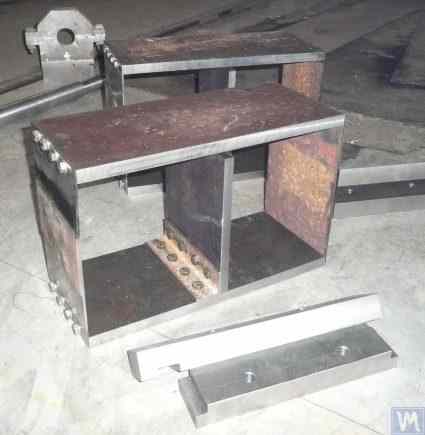
Figure 3.6. Design Variation of a Support on Flat Springs
The upper plate 1 of the support can be used to mount the spindle or an intermediate bearing. Depending on the purpose of the support, the lower plate 4 can be rigidly attached to the machine guides or installed on movable slides, allowing the support to move along the guides. Bracket 5 is used to install a locking mechanism for the support, enabling it to be securely fixed during the acceleration and deceleration of the balanced rotor.
सॉफ्ट बेयरिंग मशीन के सपोर्ट के लिए फ्लैट स्प्रिंग लीफ-स्प्रिंग या उच्च गुणवत्ता वाले मिश्रधातु से बने होने चाहिए। कम यील्ड स्ट्रेंथ वाले साधारण स्ट्रक्चरल स्टील का उपयोग उचित नहीं है, क्योंकि संचालन के दौरान स्थिर और गतिशील भार के कारण उनमें अवशिष्ट विरूपण उत्पन्न हो सकता है, जिससे मशीन की ज्यामितीय सटीकता में कमी आ सकती है और सपोर्ट की स्थिरता भी समाप्त हो सकती है।.
300-500 किलोग्राम से अधिक न होने वाले संतुलित रोटर द्रव्यमान वाली मशीनों के लिए, सपोर्ट की मोटाई 30-40 मिमी तक बढ़ाई जा सकती है, और 1000 से 3000 किलोग्राम तक के अधिकतम द्रव्यमान वाले रोटरों को संतुलित करने के लिए डिज़ाइन की गई मशीनों के लिए, सपोर्ट की मोटाई 50-60 मिमी या उससे अधिक हो सकती है। जैसा कि ऊपर वर्णित सपोर्टों के गतिशील गुणों के विश्लेषण से पता चलता है, अनुप्रस्थ तल (लचीले और कठोर भागों के सापेक्ष विरूपण के मापन का तल) में मापी गई उनकी प्राकृतिक कंपन आवृत्तियाँ आमतौर पर 100 हर्ट्ज़ या उससे अधिक होती हैं। संतुलित रोटर के घूर्णन अक्ष के साथ संरेखित दिशा में मापी गई हार्ड बेयरिंग सपोर्ट स्टैंड की प्राकृतिक कंपन आवृत्तियाँ आमतौर पर काफी कम होती हैं। मशीन पर संतुलित घूर्णनशील रोटरों के लिए परिचालन आवृत्ति सीमा की ऊपरी सीमा निर्धारित करते समय इन्हीं आवृत्तियों पर मुख्य रूप से विचार किया जाना चाहिए। जैसा कि ऊपर बताया गया है, इन आवृत्तियों का निर्धारण खंड 3.1 में वर्णित प्रभाव उत्तेजना विधि द्वारा किया जा सकता है।.
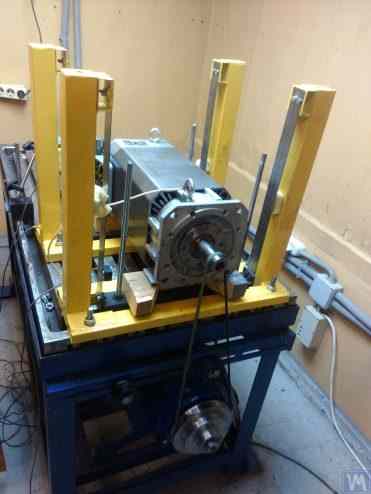
Figure 3.7. Machine for Balancing Electric Motor Rotors, Assembled, Developed by A. Mokhov.
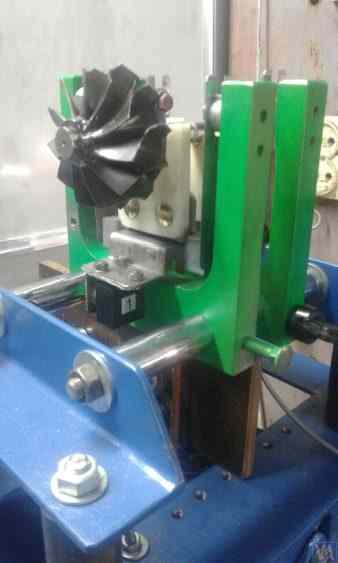
Figure 3.8. Machine for Balancing Turbopump Rotors, Developed by G. Glazov (Bishkek)
3.1.4.2. Soft Bearing Machine Supports with Suspension on Strip Springs
In designing strip springs used for supporting suspensions, attention should be paid to selecting the thickness and width of the spring strip, which on one hand must withstand the static and dynamic load of the rotor on the support, and on the other hand, must prevent the possibility of torsional vibrations of the support suspension, manifesting as axial run-out.
स्ट्रिप स्प्रिंग सस्पेंशन का उपयोग करके बैलेंसिंग मशीनों के संरचनात्मक कार्यान्वयन के उदाहरण चित्र 2.1 - 2.5 (अनुभाग 2.1 देखें) के साथ-साथ इस अनुभाग के चित्र 3.7 और 3.8 में दिखाए गए हैं।.
3.1.4.4. मशीनों के लिए कठोर भार वहन समर्थन
ग्राहकों के साथ हमारे व्यापक अनुभव से पता चलता है कि हाल ही में स्व-निर्मित बैलेंसर निर्माताओं का एक महत्वपूर्ण हिस्सा कठोर सपोर्ट वाली हार्ड बेयरिंग मशीनों को प्राथमिकता देने लगा है। खंड 2.2 में, चित्र 2.16 – 2.18 में ऐसे सपोर्ट का उपयोग करने वाली मशीनों के विभिन्न संरचनात्मक डिज़ाइनों के चित्र दर्शाए गए हैं। हमारे एक ग्राहक द्वारा अपनी मशीन के निर्माण के लिए विकसित किए गए कठोर सपोर्ट का एक विशिष्ट रेखाचित्र चित्र 3.10 में प्रस्तुत किया गया है। यह सपोर्ट एक सपाट स्टील प्लेट से बना है जिसमें P-आकार का खांचा है, जो पारंपरिक रूप से सपोर्ट को "कठोर" और "लचीले" भागों में विभाजित करता है। असंतुलन बल के प्रभाव में, सपोर्ट का "लचीला" भाग अपने "कठोर" भाग के सापेक्ष विकृत हो सकता है। इस विरूपण का परिमाण, जो सपोर्ट की मोटाई, खांचों की गहराई और सपोर्ट के "लचीले" और "कठोर" भागों को जोड़ने वाले पुल की चौड़ाई द्वारा निर्धारित होता है, मशीन के मापन प्रणाली के उपयुक्त सेंसरों का उपयोग करके मापा जा सकता है। पी-आकार के खांचे की गहराई एच, पुल की चौड़ाई टी, साथ ही समर्थन की मोटाई आर (चित्र 3.10 देखें) को ध्यान में रखते हुए, ऐसे समर्थनों की अनुप्रस्थ कठोरता की गणना करने की विधि के अभाव के कारण, इन डिजाइन मापदंडों को आमतौर पर डेवलपर्स द्वारा प्रयोगात्मक रूप से निर्धारित किया जाता है।.
300-500 किलोग्राम से अधिक न होने वाले संतुलित रोटर द्रव्यमान वाली मशीनों के लिए, सपोर्ट की मोटाई 30-40 मिमी तक बढ़ाई जा सकती है, और 1000 से 3000 किलोग्राम तक के अधिकतम द्रव्यमान वाले रोटरों को संतुलित करने के लिए डिज़ाइन की गई मशीनों के लिए, सपोर्ट की मोटाई 50-60 मिमी या उससे अधिक हो सकती है। जैसा कि ऊपर वर्णित सपोर्टों के गतिशील गुणों के विश्लेषण से पता चलता है, अनुप्रस्थ तल (लचीले और कठोर भागों के सापेक्ष विरूपण के मापन का तल) में मापी गई उनकी प्राकृतिक कंपन आवृत्तियाँ आमतौर पर 100 हर्ट्ज़ या उससे अधिक होती हैं। संतुलित रोटर के घूर्णन अक्ष के साथ संरेखित दिशा में मापी गई हार्ड बेयरिंग सपोर्ट स्टैंड की प्राकृतिक कंपन आवृत्तियाँ आमतौर पर काफी कम होती हैं। मशीन पर संतुलित घूर्णनशील रोटरों के लिए परिचालन आवृत्ति सीमा की ऊपरी सीमा निर्धारित करते समय इन्हीं आवृत्तियों पर मुख्य रूप से विचार किया जाना चाहिए।.
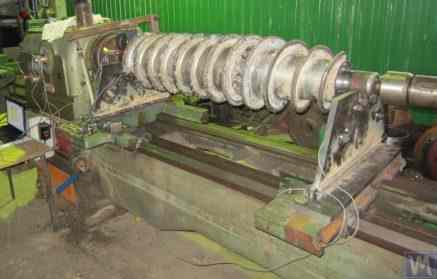
चित्र 3.26. ऑगर्स को संतुलित करने के लिए हार्ड बेयरिंग मशीन के निर्माण के लिए प्रयुक्त लेथ बेड का उपयोग करने का उदाहरण।
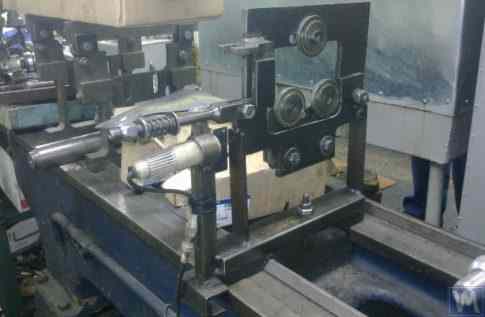
चित्र 3.27. शाफ्ट को संतुलित करने के लिए सॉफ्ट बेयरिंग मशीन के निर्माण के लिए प्रयुक्त लेथ बेड का उपयोग करने का उदाहरण।
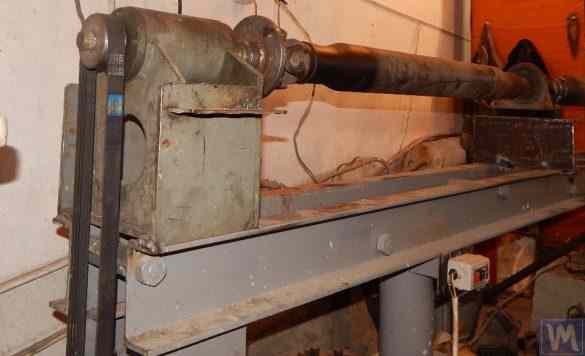
चित्र 3.28. चैनलों से एक असेंबल बिस्तर बनाने का उदाहरण
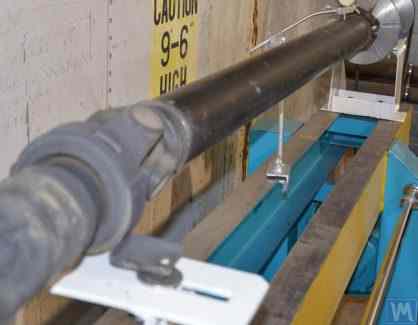
चित्र 3.29. चैनलों से वेल्डेड बेड बनाने का उदाहरण
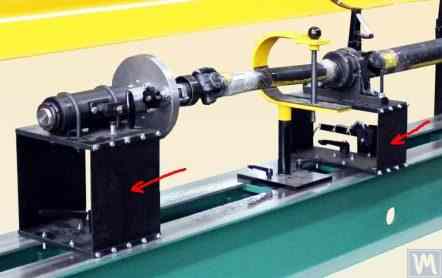
चित्र 3.30. चैनलों से वेल्डेड बेड के निर्माण का उदाहरण
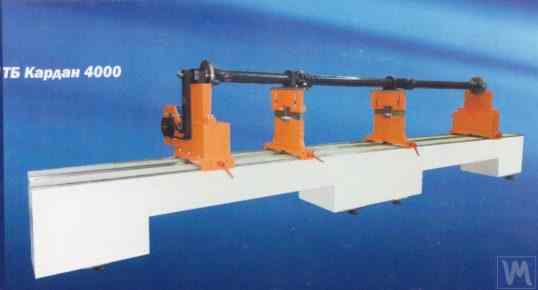
चित्र 3.31. पॉलिमर कंक्रीट से बने बैलेंसिंग मशीन बेड का उदाहरण
आम तौर पर, ऐसे बिस्तरों के निर्माण में, उनके ऊपरी हिस्से को स्टील इंसर्ट से मजबूत किया जाता है, जिनका उपयोग गाइड के रूप में किया जाता है, जिन पर संतुलन मशीन के सपोर्ट स्टैंड आधारित होते हैं। हाल ही में, कंपन-रोधी कोटिंग वाले पॉलीमर कंक्रीट से बने बिस्तर व्यापक रूप से उपयोग में आ गए हैं। बिस्तरों के निर्माण की यह तकनीक ऑनलाइन अच्छी तरह से वर्णित है और इसे DIY निर्माता आसानी से लागू कर सकते हैं। उत्पादन की अपेक्षाकृत सरलता और कम लागत के कारण, इन बिस्तरों के धातु के समकक्षों की तुलना में कई प्रमुख लाभ हैं:
- कंपन दोलनों के लिए उच्च अवमंदन गुणांक;
- कम तापीय चालकता, बिस्तर के न्यूनतम तापीय विरूपण को सुनिश्चित करती है;
- उच्च संक्षारण प्रतिरोध;
- आंतरिक तनाव का अभाव।
3.1.4.3. Soft Bearing Machine Supports Made Using Cylindrical Springs
An example of a Soft Bearing balancing machine, in which cylindrical compression springs are used in the design of the supports, is shown in Figure 3.9. The main drawback of this design solution is related to the varying degrees of spring deformation in the front and rear supports, which occurs if the loads on the supports are unequal during the balancing of asymmetrical rotors. This naturally leads to misalignment of the supports and skewing of the rotor axis in the vertical plane. One of the negative consequences of this defect may be the emergence of forces that cause the rotor to shift axially during rotation.
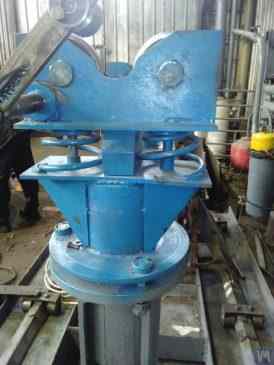
Fig. 3.9. Soft Bearing Support Construction Variant for Balancing Machines Using Cylindrical Springs.
3.1.4.4. मशीनों के लिए कठोर भार वहन समर्थन
ग्राहकों के साथ हमारे व्यापक अनुभव से पता चलता है कि हाल ही में स्व-निर्मित बैलेंसर निर्माताओं का एक महत्वपूर्ण हिस्सा कठोर सपोर्ट वाली हार्ड बेयरिंग मशीनों को प्राथमिकता देने लगा है। खंड 2.2 में, चित्र 2.16 – 2.18 में ऐसे सपोर्ट का उपयोग करने वाली मशीनों के विभिन्न संरचनात्मक डिज़ाइनों के चित्र दर्शाए गए हैं। हमारे एक ग्राहक द्वारा अपनी मशीन के निर्माण के लिए विकसित किए गए कठोर सपोर्ट का एक विशिष्ट रेखाचित्र चित्र 3.10 में प्रस्तुत किया गया है। यह सपोर्ट एक सपाट स्टील प्लेट से बना है जिसमें P-आकार का खांचा है, जो पारंपरिक रूप से सपोर्ट को "कठोर" और "लचीले" भागों में विभाजित करता है। असंतुलन बल के प्रभाव में, सपोर्ट का "लचीला" भाग अपने "कठोर" भाग के सापेक्ष विकृत हो सकता है। इस विरूपण का परिमाण, जो सपोर्ट की मोटाई, खांचों की गहराई और सपोर्ट के "लचीले" और "कठोर" भागों को जोड़ने वाले पुल की चौड़ाई द्वारा निर्धारित होता है, मशीन के मापन प्रणाली के उपयुक्त सेंसरों का उपयोग करके मापा जा सकता है। पी-आकार के खांचे की गहराई एच, पुल की चौड़ाई टी, साथ ही समर्थन की मोटाई आर (चित्र 3.10 देखें) को ध्यान में रखते हुए, ऐसे समर्थनों की अनुप्रस्थ कठोरता की गणना करने की विधि के अभाव के कारण, इन डिजाइन मापदंडों को आमतौर पर डेवलपर्स द्वारा प्रयोगात्मक रूप से निर्धारित किया जाता है।.
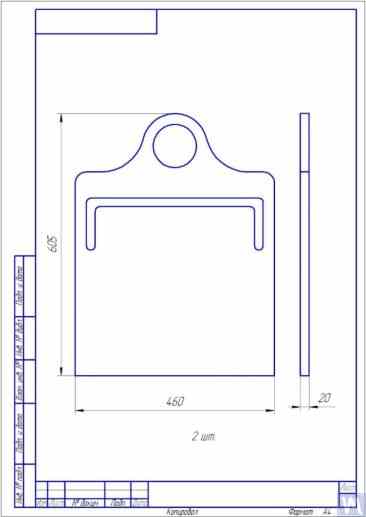
Fig. 3.10. Sketch of Hard Bearing Support for Balancing Machine
चित्र 3.11 और 3.12 में ऐसे सपोर्ट के विभिन्न उपयोगों को दर्शाया गया है, जिन्हें हमारे ग्राहकों की मशीनों के लिए बनाया गया है। मशीन निर्माताओं सहित हमारे कई ग्राहकों से प्राप्त आंकड़ों के आधार पर, विभिन्न आकारों और भार क्षमता वाली मशीनों के लिए सपोर्ट की मोटाई की आवश्यकताओं को निर्धारित किया जा सकता है। उदाहरण के लिए, 0.1 से 50-100 किलोग्राम वजन वाले रोटरों को संतुलित करने वाली मशीनों के लिए, सपोर्ट की मोटाई 20 मिमी हो सकती है।.
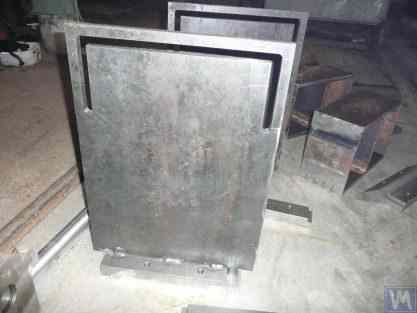
Fig. 3.11. Hard Bearing Supports for Balancing Machine, Manufactured by A. Sinitsyn
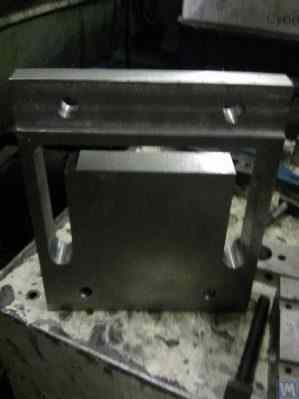
Fig. 3.12. Hard Bearing Support for Balancing Machine, Manufactured by D. Krasilnikov
300-500 किलोग्राम से अधिक न होने वाले संतुलित रोटर द्रव्यमान वाली मशीनों के लिए, सपोर्ट की मोटाई 30-40 मिमी तक बढ़ाई जा सकती है, और 1000 से 3000 किलोग्राम तक के अधिकतम द्रव्यमान वाले रोटरों को संतुलित करने के लिए डिज़ाइन की गई मशीनों के लिए, सपोर्ट की मोटाई 50-60 मिमी या उससे अधिक हो सकती है। जैसा कि ऊपर वर्णित सपोर्टों के गतिशील गुणों के विश्लेषण से पता चलता है, अनुप्रस्थ तल (लचीले और कठोर भागों के सापेक्ष विरूपण के मापन का तल) में मापी गई उनकी प्राकृतिक कंपन आवृत्तियाँ आमतौर पर 100 हर्ट्ज़ या उससे अधिक होती हैं। संतुलित रोटर के घूर्णन अक्ष के साथ संरेखित दिशा में मापी गई हार्ड बेयरिंग सपोर्ट स्टैंड की प्राकृतिक कंपन आवृत्तियाँ आमतौर पर काफी कम होती हैं। मशीन पर संतुलित घूर्णनशील रोटरों के लिए परिचालन आवृत्ति सीमा की ऊपरी सीमा निर्धारित करते समय इन्हीं आवृत्तियों पर मुख्य रूप से विचार किया जाना चाहिए। जैसा कि ऊपर बताया गया है, इन आवृत्तियों का निर्धारण खंड 3.1 में वर्णित प्रभाव उत्तेजना विधि द्वारा किया जा सकता है।.
3.2. Supporting Assemblies of Balancing Machines
3.2.1. Main Types of Supporting Assemblies
In the manufacture of both Hard Bearing and Soft Bearing balancing machines, the following well-known types of supporting assemblies, used for the installation and rotation of balanced rotors on supports, can be recommended, including:
- Prismatic supporting assemblies;
- Supporting assemblies with rotating rollers;
- Spindle supporting assemblies.
3.2.1.1. Prismatic Supporting Assemblies
विभिन्न डिज़ाइन विकल्पों वाली ये असेंबली आमतौर पर छोटी और मध्यम आकार की मशीनों के सपोर्ट पर लगाई जाती हैं, जिन पर 50-100 किलोग्राम से अधिक द्रव्यमान वाले रोटरों को संतुलित किया जा सकता है। एक प्रिज्मीय सपोर्ट असेंबली के सबसे सरल संस्करण का उदाहरण चित्र 3.13 में दिखाया गया है। यह सपोर्ट असेंबली स्टील से बनी है और इसका उपयोग टरबाइन बैलेंसिंग मशीन पर किया जाता है। छोटी और मध्यम आकार की बैलेंसिंग मशीनों के कई निर्माता प्रिज्मीय सपोर्ट असेंबली बनाते समय टेक्सटोलाइट, फ्लोरोप्लास्टिक, कैप्रोलॉन आदि जैसी गैर-धात्विक सामग्री (डाइइलेक्ट्रिक्स) का उपयोग करना पसंद करते हैं।.
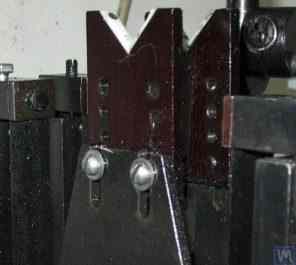
3.13. Execution Variant of Prismatic Supporting Assembly, Used on a Balancing Machine for Automobile Turbines
उदाहरण के लिए, जी. ग्लाज़ोव ने अपनी मशीन में इसी प्रकार के सहायक असेंबली (ऊपर चित्र 3.8 देखें) का उपयोग किया है, जो ऑटोमोबाइल टर्बाइनों को संतुलित करने के लिए भी बनाई गई है। फ्लोरोप्लास्टिक से बने प्रिज्मीय सहायक असेंबली (चित्र 3.14 देखें) का मूल तकनीकी समाधान एलएलसी "टेक्नोबैलेंस" द्वारा प्रस्तावित किया गया है।.
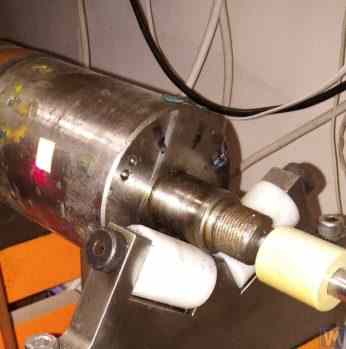
चित्र 3.14. एलएलसी "टेक्नोबैलेंस" द्वारा निर्मित प्रिज्मीय सपोर्ट असेंबली"
यह विशेष सहायक असेंबली दो बेलनाकार स्लीव 1 और 2 से बनी है, जो एक दूसरे से एक कोण पर स्थापित हैं और सहायक अक्षों पर स्थिर हैं। संतुलित रोटर सिलेंडरों की जनरेटिंग लाइनों के साथ स्लीव की सतहों के संपर्क में आता है, जिससे रोटर शाफ्ट और सपोर्ट के बीच संपर्क क्षेत्र कम हो जाता है, और परिणामस्वरूप सपोर्ट में घर्षण बल कम हो जाता है। यदि आवश्यक हो, तो रोटर शाफ्ट के संपर्क क्षेत्र में सपोर्ट की सतह पर घिसावट या क्षति होने की स्थिति में, स्लीव को उसके अक्ष के चारों ओर एक निश्चित कोण पर घुमाकर घिसावट की भरपाई की जा सकती है। यह ध्यान रखना महत्वपूर्ण है कि जब अधात्विक पदार्थों से बनी सहायक असेंबली का उपयोग किया जाता है, तो संतुलित रोटर को मशीन बॉडी से ग्राउंड करने की संरचनात्मक व्यवस्था करना आवश्यक है, जिससे संचालन के दौरान उत्पन्न होने वाले शक्तिशाली स्थैतिक विद्युत आवेशों का खतरा समाप्त हो जाता है। इससे, पहला, मशीन के मापन प्रणाली के प्रदर्शन को प्रभावित करने वाले विद्युत हस्तक्षेप और व्यवधानों को कम करने में मदद मिलती है, और दूसरा, कर्मियों के स्थैतिक विद्युत के प्रभाव से प्रभावित होने का खतरा समाप्त हो जाता है।.
3.2.1.2. Roller Supporting Assemblies
ये असेंबली आम तौर पर 50 किलोग्राम या उससे अधिक द्रव्यमान वाले रोटरों को संतुलित करने के लिए डिज़ाइन की गई मशीनों के सपोर्ट पर लगाई जाती हैं। इनका उपयोग प्रिज्मीय सपोर्ट की तुलना में सपोर्ट में घर्षण बलों को काफी कम कर देता है, जिससे संतुलित रोटर का घूर्णन सुगम हो जाता है। उदाहरण के लिए, चित्र 3.15 में एक सपोर्ट असेंबली का डिज़ाइन दिखाया गया है जिसमें उत्पाद की स्थिति निर्धारण के लिए रोलर्स का उपयोग किया जाता है। इस डिज़ाइन में, मानक रोलिंग बियरिंग का उपयोग रोलर 1 और 2 के रूप में किया जाता है, जिनके बाहरी वलय मशीन के सपोर्ट 3 में स्थिर अक्षों पर घूमते हैं। चित्र 3.16 में एक रोलर सपोर्ट असेंबली के अधिक जटिल डिज़ाइन का रेखाचित्र दर्शाया गया है, जिसे संतुलन मशीनों के एक स्व-निर्मित निर्माता ने अपनी परियोजना में लागू किया है। चित्र से स्पष्ट है कि रोलर (और परिणामस्वरूप संपूर्ण सहायक असेंबली) की भार वहन क्षमता बढ़ाने के लिए, रोलर बॉडी 3 में रोलिंग बियरिंग 1 और 2 की एक जोड़ी स्थापित की गई है। इस डिज़ाइन का व्यावहारिक कार्यान्वयन, इसके सभी स्पष्ट लाभों के बावजूद, एक जटिल कार्य प्रतीत होता है, क्योंकि इसके लिए रोलर बॉडी 3 का स्वतंत्र निर्माण आवश्यक है, जिस पर ज्यामितीय सटीकता और सामग्री के यांत्रिक गुणों के लिए बहुत उच्च आवश्यकताएं लागू होती हैं।.
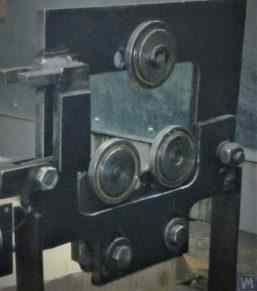
Fig. 3.15. Example of Roller Supporting Assembly Design
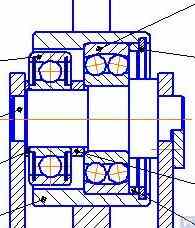
Fig. 3.16. Example of Roller Supporting Assembly Design with Two Rolling Bearings
चित्र 3.17 में LLC "टेक्नोबैलेंस" के विशेषज्ञों द्वारा विकसित स्व-संरेखण रोलर सपोर्टिंग असेंबली का एक डिज़ाइन वेरिएंट दिखाया गया है। इस डिज़ाइन में, रोलर्स को दो अतिरिक्त डिग्री ऑफ़ फ़्रीडम प्रदान करके उनकी स्व-संरेखण क्षमता प्राप्त की जाती है, जिससे रोलर्स X और Y अक्षों के चारों ओर छोटे कोणीय गति कर सकते हैं। इस प्रकार की सपोर्टिंग असेंबली, जो संतुलित रोटर्स की स्थापना में उच्च परिशुद्धता सुनिश्चित करती हैं, आमतौर पर भारी बैलेंसिंग मशीनों के सपोर्ट पर उपयोग के लिए अनुशंसित की जाती हैं।.
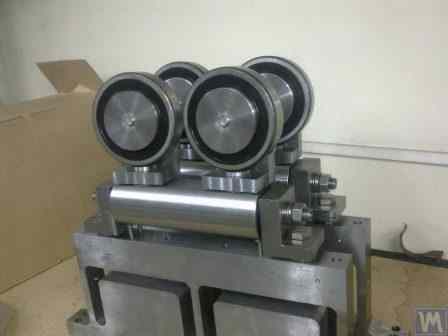
Fig. 3.17. Example of Self-Aligning Roller Supporting Assembly Design
As mentioned earlier, roller support assemblies typically have fairly high requirements for precision manufacturing and rigidity. In particular, the tolerances set for radial runout of the rollers should not exceed 3-5 microns.
व्यवहार में, यह उपलब्धि हमेशा प्रसिद्ध निर्माताओं द्वारा भी हासिल नहीं की जा सकती। उदाहरण के लिए, लेखक द्वारा संतुलन मशीन मॉडल H8V, ब्रांड "के. शेनक" के लिए स्पेयर पार्ट्स के रूप में खरीदे गए नए रोलर सपोर्ट असेंबली के एक सेट के रेडियल रनआउट के परीक्षण के दौरान, उनके रोलर्स का रेडियल रनआउट 10-11 माइक्रोन तक पहुंच गया।.
3.2.1.3. Spindle Supporting Assemblies
When balancing rotors with flange mounting (for example, cardan shafts) on balancing machines, spindles are used as supporting assemblies for positioning, mounting, and rotation of the balanced products.
Spindles are one of the most complex and critical components of balancing machines, largely responsible for achieving the required balancing quality.
स्पिंडल के डिजाइन और निर्माण का सिद्धांत और व्यवहार काफी अच्छी तरह से विकसित है और प्रकाशनों की एक विस्तृत श्रृंखला में परिलक्षित होता है, जिनमें से, डॉ. इंजी. डी.एन. रेशेतोव द्वारा संपादित मोनोग्राफ "धातु-काटने वाली मशीन टूल्स के विवरण और तंत्र" [1] डेवलपर्स के लिए सबसे उपयोगी और सुलभ के रूप में सामने आता है।.
Among the main requirements that should be considered in the design and manufacturing of balancing machine spindles, the following should be prioritized:
a) Providing high rigidity of the spindle assembly structure sufficient to prevent unacceptable deformations that may occur under the influence of unbalance forces of the balanced rotor;
b) Ensuring the stability of the spindle rotation axis position, characterized by permissible values of radial, axial, and axial runouts of the spindle;
c) Ensuring proper wear resistance of the spindle journals, as well as its seating and supporting surfaces used for mounting balanced products.
इन आवश्यकताओं के व्यावहारिक कार्यान्वयन का विवरण कार्य [1] के खंड VI "स्पिंडल और उनके समर्थन" में दिया गया है।.
In particular, there are methodologies for verifying the rigidity and rotational accuracy of spindles, recommendations for selecting bearings, choosing spindle material and methods of its hardening, as well as much other useful information on this topic.
Work [1] notes that in the design of spindles for most types of metal-cutting machine tools, a two-bearing scheme is mainly used.
An example of the design variant of such a two-bearing scheme used in milling machine spindles (details can be found in work [1]) is shown in Fig. 3.18.
This scheme is quite suitable for the manufacture of balancing machine spindles, examples of design variants of which are shown below in Figures 3.19-3.22.
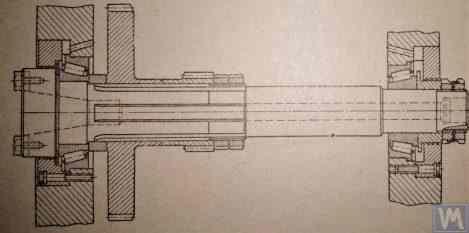
Fig. 3.18. Sketch of a Two-Bearing Milling Machine Spindle
Figure 3.19 shows one of the design variants of the leading spindle assembly of a balancing machine, rotating on two radial-thrust bearings, each of which has its own independent housing 1 and 2. A flange 4, intended for flange mounting of a cardan shaft, and a pulley 5, used to transmit rotation to the spindle from the electric motor using a V-belt drive, are mounted on the spindle shaft 3.
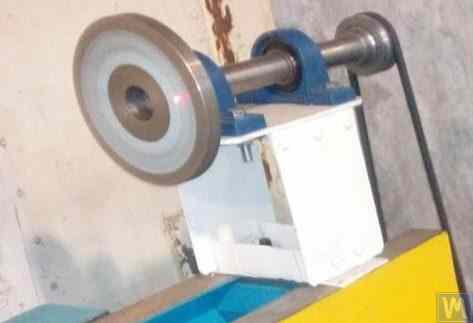
Figure 3.19. Example of Spindle Design on Two Independent Bearing Supports
Figures 3.20 and 3.21 show two closely related designs of leading spindle assemblies. In both cases, the spindle bearings are installed in a common housing 1, which has a through axial hole necessary for installing the spindle shaft. At the entrance and exit of this hole, the housing has special bores (not shown in the figures), designed to accommodate radial thrust bearings (roller or ball) and special flange covers 5, used to secure the outer rings of the bearings.
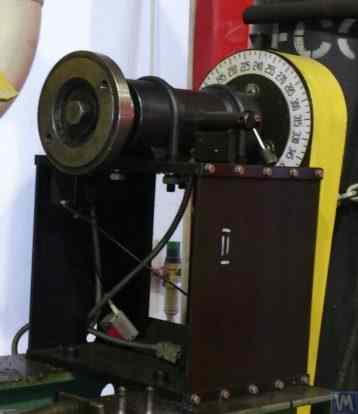
Figure 3.20. Example 1 of a Leading Spindle Design on Two Bearing Supports Installed in a Common Housing

Figure 3.21. Example 2 of a Leading Spindle Design on Two Bearing Supports Installed in a Common Housing
As in the previous version (see Fig. 3.19), a faceplate 2 is installed on the spindle shaft, intended for flange mounting of the drive shaft, and a pulley 3, used to transmit rotation to the spindle from the electric motor via a belt drive. A limb 4 is also fixed to the spindle shaft, which is used to determine the angular position of the spindle, utilized when installing test and corrective weights on the rotor during balancing.
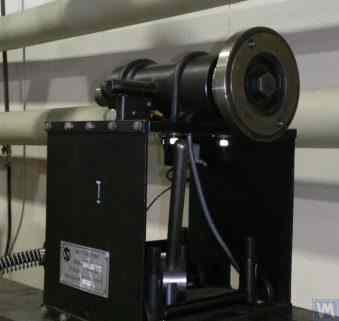
Figure 3.22. Example of a Design of a Driven (Rear) Spindle
Figure 3.22 shows a design variant of the driven (rear) spindle assembly of a machine, which differs from the leading spindle only by the absence of the drive pulley and limb, as they are not needed.
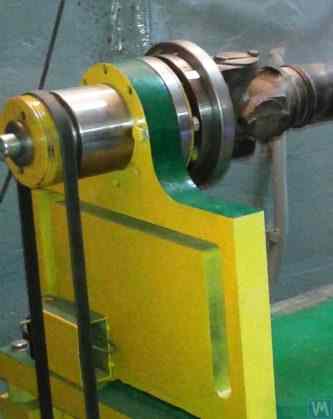
चित्र 3.23. संचालित (पिछली) धुरी के डिजाइन निष्पादन का उदाहरण
As seen in Figures 3.20 – 3.22, the spindle assemblies discussed above are attached to the Soft Bearing supports of balancing machines using special clamps (straps) 6. Other methods of attachment can also be used if necessary, ensuring proper rigidity and precision in positioning the spindle assembly on the support.
Figure 3.23 illustrates a design of flange mounting similar to that spindle, which can be used for its installation on a Hard Bearing support of a balancing machine.
3.2.1.3.4. स्पिंडल कठोरता और रेडियल रनआउट की गणना
स्पिंडल की कठोरता और अपेक्षित रेडियल रनआउट निर्धारित करने के लिए, सूत्र 3.4 का उपयोग किया जा सकता है (चित्र 3.24 में गणना योजना देखें):
कहाँ:
- Y स्पिंडल कंसोल के अंत में स्पिंडल का प्रत्यास्थ विस्थापन, सेंटीमीटर में;
- P - स्पिंडल कंसोल पर लगने वाला परिकलित भार, किलोग्राम में;
- ए - स्पिंडल का पिछला बेयरिंग सपोर्ट;
- बी - स्पिंडल का फ्रंट बेयरिंग सपोर्ट;
- जी स्पिंडल कंसोल की लंबाई, सेंटीमीटर में;
- सी - स्पिंडल के सपोर्ट A और B के बीच की दूरी, सेंटीमीटर में;
- जे1 - सपोर्ट के बीच स्पिंडल सेक्शन का औसत जड़त्व आघूर्ण, सेमी⁴;
- जे2 - स्पिंडल कंसोल अनुभाग का औसत जड़त्व आघूर्ण, सेमी⁴;
- जेबी और जेए स्पिंडल के आगे और पीछे के सपोर्ट के लिए बियरिंग की कठोरता, क्रमशः, किलोग्राम/सेमी में।.
सूत्र 3.4 को रूपांतरित करके, स्पिंडल असेंबली कठोरता का वांछित गणना मूल्य jшп निर्धारित किया जा सकता है:
मध्यम आकार की संतुलन मशीनों के लिए कार्य [1] की सिफारिशों को ध्यान में रखते हुए, यह मान 50 किग्रा/µm से कम नहीं होना चाहिए।
रेडियल रनआउट की गणना के लिए, सूत्र 3.5 का उपयोग किया जाता है:
कहाँ:
- Δ स्पिंडल कंसोल छोर पर रेडियल रनआउट है, µm;
- ∆B फ्रंट स्पिंडल बेयरिंग का रेडियल रनआउट है, µm;
- ∆A रियर स्पिंडल बेयरिंग का रेडियल रनआउट है, µm;
- g स्पिंडल कंसोल की लंबाई, सेमी है;
- c धुरी के आधार A और B के बीच की दूरी, सेमी है।
3.2.1.3.5. स्पिंडल संतुलन आवश्यकताओं को सुनिश्चित करना
संतुलन मशीनों के स्पिंडल असेंबली का अच्छी तरह से संतुलित होना आवश्यक है, क्योंकि कोई भी वास्तविक असंतुलन संतुलित किए जा रहे रोटर में अतिरिक्त त्रुटि के रूप में स्थानांतरित हो जाएगा। स्पिंडल के अवशिष्ट असंतुलन के लिए तकनीकी सहनशीलता निर्धारित करते समय, आमतौर पर यह सलाह दी जाती है कि इसके संतुलन का परिशुद्धता वर्ग मशीन पर संतुलित किए जा रहे उत्पाद के परिशुद्धता वर्ग से कम से कम 1-2 वर्ग उच्च होना चाहिए।.
ऊपर चर्चित स्पिंडलों की डिजाइन विशेषताओं को ध्यान में रखते हुए, उनका संतुलन दो तलों में किया जाना चाहिए।
3.2.1.3.6. स्पिंडल बियरिंग्स के लिए बियरिंग लोड क्षमता और स्थायित्व आवश्यकताओं को सुनिश्चित करना
स्पिंडल डिजाइन करते समय और बेयरिंग के आकार का चयन करते समय, बेयरिंग की मजबूती और भार वहन क्षमता का प्रारंभिक आकलन करना उचित होता है। इन गणनाओं को करने की कार्यप्रणाली का विस्तृत विवरण ISO 18855-94 (ISO 281-89) "रोलिंग बेयरिंग - डायनेमिक लोड रेटिंग और रेटिंग लाइफ" [3] में, साथ ही कई (डिजिटल सहित) रोलिंग बेयरिंग हैंडबुक में दिया जा सकता है।.
3.2.1.3.7. स्पिंडल बियरिंग्स की स्वीकार्य हीटिंग के लिए आवश्यकताओं को सुनिश्चित करना
कार्य [1] की सिफारिशों के अनुसार, स्पिंडल बीयरिंग के बाहरी रिंगों का अधिकतम स्वीकार्य ताप 70 डिग्री सेल्सियस से अधिक नहीं होना चाहिए। हालांकि, उच्च गुणवत्ता वाले संतुलन को सुनिश्चित करने के लिए, बाहरी रिंगों का अनुशंसित ताप 40 - 45 डिग्री सेल्सियस से अधिक नहीं होना चाहिए।
3.2.1.3.8. बेल्ट ड्राइव का प्रकार और स्पिंडल के लिए ड्राइव पुली का डिज़ाइन चुनना
बैलेंसिंग मशीन के ड्राइविंग स्पिंडल को डिज़ाइन करते समय, फ्लैट बेल्ट ड्राइव का उपयोग करके इसके रोटेशन को सुनिश्चित करने की अनुशंसा की जाती है। स्पिंडल संचालन के लिए इस तरह के ड्राइव के उचित उपयोग का एक उदाहरण प्रस्तुत किया गया है आंकड़े 3.20 और 3.23. वी-बेल्ट या दांतेदार बेल्ट ड्राइव का उपयोग अवांछनीय है, क्योंकि बेल्ट और पुली में ज्यामितीय अशुद्धियों के कारण वे स्पिंडल पर अतिरिक्त गतिशील भार डाल सकते हैं, जिससे संतुलन के दौरान अतिरिक्त माप त्रुटियां हो सकती हैं। फ्लैट ड्राइव बेल्ट के लिए पुली की अनुशंसित आवश्यकताएं आईएसओ 17383-73 "फ्लैट ड्राइव बेल्ट के लिए पुली" [4] में उल्लिखित हैं।.
ड्राइव पुली को स्पिंडल के पिछले सिरे पर, बेयरिंग असेंबली के जितना संभव हो सके उतना करीब (न्यूनतम संभव ओवरहैंग के साथ) रखा जाना चाहिए। स्पिंडल के निर्माण में पुली के ओवरहैंगिंग प्लेसमेंट के लिए डिज़ाइन निर्णय, चित्र में दिखाया गया है। चित्र 3.19, असफल माना जा सकता है, क्योंकि यह स्पिंडल समर्थन पर अभिनय करने वाले गतिशील ड्राइव लोड के क्षण को काफी हद तक बढ़ा देता है।
इस डिजाइन का एक अन्य महत्वपूर्ण दोष वी-बेल्ट ड्राइव का उपयोग है, जिसके निर्माण और संयोजन में अशुद्धियां भी स्पिंडल पर अवांछनीय अतिरिक्त भार का स्रोत हो सकती हैं।
3.3. बिस्तर (फ्रेम)
बेड बैलेंसिंग मशीन की मुख्य सहायक संरचना है, जिस पर इसके मुख्य तत्व आधारित होते हैं, जिसमें सपोर्ट पोस्ट और ड्राइव मोटर शामिल हैं। बैलेंसिंग मशीन के बेड का चयन या निर्माण करते समय, यह सुनिश्चित करना आवश्यक है कि यह कई आवश्यकताओं को पूरा करता है, जिसमें आवश्यक कठोरता, ज्यामितीय परिशुद्धता, कंपन प्रतिरोध और इसके गाइड का पहनने का प्रतिरोध शामिल है।
अभ्यास से पता चलता है कि अपनी जरूरतों के लिए मशीनों का निर्माण करते समय, निम्नलिखित बिस्तर विकल्पों का सबसे अधिक उपयोग किया जाता है:
- प्रयुक्त धातु-काटने वाली मशीनों (खराद, काष्ठकला, आदि) से बने कच्चे लोहे के बेड;
- चैनलों पर आधारित इकट्ठे बेड, बोल्ट कनेक्शन का उपयोग करके इकट्ठे किए गए;
- चैनलों पर आधारित वेल्डेड बेड;
- कंपन-अवशोषित कोटिंग्स के साथ पॉलिमर कंक्रीट बेड।
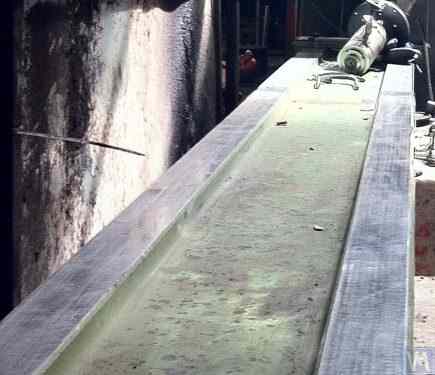
चित्र 3.25. कार्डन शाफ्ट को संतुलित करने के लिए मशीन के निर्माण हेतु प्रयुक्त वुडवर्किंग मशीन बेड का उपयोग करने का उदाहरण।
3.4. संतुलन मशीनों के लिए ड्राइव
जैसा कि संतुलन मशीनों के निर्माण में हमारे ग्राहकों द्वारा उपयोग किए जाने वाले डिज़ाइन समाधानों के विश्लेषण से पता चलता है, वे मुख्य रूप से ड्राइव के डिज़ाइन के दौरान परिवर्तनीय आवृत्ति ड्राइव से सुसज्जित एसी मोटर्स का उपयोग करने पर ध्यान केंद्रित करते हैं। यह दृष्टिकोण न्यूनतम लागत के साथ संतुलित रोटर्स के लिए समायोज्य रोटेशन गति की एक विस्तृत श्रृंखला की अनुमति देता है। संतुलित रोटर्स को घुमाने के लिए उपयोग की जाने वाली मुख्य ड्राइव मोटर्स की शक्ति आमतौर पर इन रोटर्स के द्रव्यमान के आधार पर चुनी जाती है और लगभग हो सकती है:
- 5 किलोग्राम या उससे कम द्रव्यमान वाले रोटरों को संतुलित करने के लिए डिज़ाइन की गई मशीनों के लिए 0.25 - 0.72 किलोवाट;
- 5 किलोग्राम से अधिक या उसके बराबर द्रव्यमान वाले रोटरों को संतुलित करने के लिए डिज़ाइन की गई मशीनों के लिए 0.72 - 1.2 किलोवाट;
- 50 किलोग्राम से अधिक और 100 किलोग्राम से कम द्रव्यमान वाले रोटरों को संतुलित करने के लिए डिज़ाइन की गई मशीनों के लिए 1.2 - 1.5 किलोवाट;
- 100 किलोग्राम से अधिक और 500 किलोग्राम से कम द्रव्यमान वाले रोटरों को संतुलित करने के लिए डिज़ाइन की गई मशीनों के लिए 1.5 - 2.2 किलोवाट;
- 2.2 - 5 किलोवाट उन मशीनों के लिए जो 500 ≤ 1000 किलोग्राम द्रव्यमान वाले रोटरों को संतुलित करने के लिए डिज़ाइन की गई हैं;
- 1000 से 3000 किलोग्राम द्रव्यमान वाले रोटरों को संतुलित करने के लिए डिज़ाइन की गई मशीनों के लिए 5 - 7.5 किलोवाट।.
इन मोटरों को मशीन बेड या इसकी नींव पर मजबूती से लगाया जाना चाहिए। मशीन पर (या स्थापना स्थल पर) स्थापना से पहले, मुख्य ड्राइव मोटर, इसके आउटपुट शाफ्ट पर लगे पुली के साथ, सावधानीपूर्वक संतुलित किया जाना चाहिए। परिवर्तनीय आवृत्ति ड्राइव के कारण होने वाले विद्युत चुम्बकीय हस्तक्षेप को कम करने के लिए, इसके इनपुट और आउटपुट पर नेटवर्क फ़िल्टर स्थापित करने की अनुशंसा की जाती है। ये ड्राइव के निर्माताओं द्वारा आपूर्ति किए गए मानक ऑफ-द-शेल्फ उत्पाद या फेराइट रिंग का उपयोग करके बनाए गए होममेड फ़िल्टर हो सकते हैं।
4. Measuring Systems of Balancing Machines
संतुलन मशीनों के अधिकांश शौकिया निर्माता, जो एलएलसी "किनेमेटिक्स" (वाइब्रोमेरा) से संपर्क करते हैं, अपने डिज़ाइनों में हमारी कंपनी द्वारा निर्मित "बैलेंसेट" श्रृंखला के मापन प्रणालियों का उपयोग करने की योजना बनाते हैं। हालांकि, कुछ ऐसे ग्राहक भी हैं जो ऐसी मापन प्रणालियों का निर्माण स्वयं करना चाहते हैं। इसलिए, संतुलन मशीन के लिए मापन प्रणाली के निर्माण पर विस्तार से चर्चा करना उचित होगा। इन प्रणालियों की मुख्य आवश्यकता संतुलित रोटर की घूर्णन आवृत्ति पर उत्पन्न होने वाले कंपन संकेत के घूर्णी घटक के आयाम और चरण का उच्च परिशुद्धता मापन प्रदान करना है। यह लक्ष्य आमतौर पर तकनीकी समाधानों के संयोजन द्वारा प्राप्त किया जाता है, जिनमें शामिल हैं:
- Use of vibration sensors with a high signal conversion coefficient;
- Use of modern laser phase angle sensors;
- Creation (or use) of hardware that allows for the amplification and digital conversion of sensor signals (primary signal processing);
- कंपन संकेत के सॉफ्टवेयर प्रसंस्करण का कार्यान्वयन, जो संतुलित रोटर की घूर्णन आवृत्ति पर प्रकट होने वाले कंपन संकेत के घूर्णी घटक के उच्च-रिज़ॉल्यूशन और स्थिर निष्कर्षण की अनुमति देगा (द्वितीयक प्रसंस्करण)।.
नीचे, हम ऐसे तकनीकी समाधानों के ज्ञात प्रकारों पर विचार करते हैं, जिन्हें कई प्रसिद्ध संतुलन उपकरणों में लागू किया गया है।.
4.1. Selection of Vibration Sensors
In the measurement systems of balancing machines, various types of vibration sensors (transducers) can be used, including:
- Vibration acceleration sensors (accelerometers);
- Vibration velocity sensors;
- Vibration displacement sensors;
- Force sensors.
4.1.1. Vibration Acceleration Sensors
कंपन त्वरण सेंसरों में, पीज़ो और कैपेसिटिव (चिप) एक्सेलेरोमीटर सबसे व्यापक रूप से उपयोग किए जाते हैं, जिनका उपयोग सॉफ्ट बेयरिंग प्रकार की बैलेंसिंग मशीनों में प्रभावी ढंग से किया जा सकता है। व्यवहार में, आमतौर पर 10 से 30 mV/(m/s²) के रूपांतरण गुणांक (Kpr) वाले कंपन त्वरण सेंसरों का उपयोग करना स्वीकार्य है। विशेष रूप से उच्च संतुलन सटीकता की आवश्यकता वाली बैलेंसिंग मशीनों में, 100 mV/(m/s²) और उससे अधिक Kpr स्तर वाले एक्सेलेरोमीटरों का उपयोग करना उचित है। बैलेंसिंग मशीनों के लिए कंपन सेंसर के रूप में उपयोग किए जा सकने वाले पीज़ो एक्सेलेरोमीटरों के उदाहरण के रूप में, चित्र 4.1 में LLC "इज़मेरिटेल" द्वारा निर्मित DN3M1 और DN3M1V6 पीज़ो एक्सेलेरोमीटर दिखाए गए हैं।.
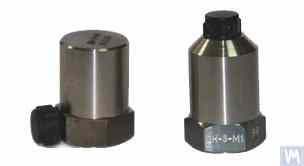
Figure 4.1. Piezo Accelerometers DN 3M1 and DN 3M1V6
To connect such sensors to vibration measuring instruments and systems, it is necessary to use external or built-in charge amplifiers.
चित्र 4.2. कैपेसिटिव एक्सेलेरोमीटर AD1, LLC "किनेमेटिक्स" (वाइब्रोमेरा) द्वारा निर्मित।
It should be noted that these sensors, which include widely used market boards of capacitive accelerometers ADXL 345 (see Figure 4.3), have several significant advantages over piezo accelerometers. Specifically, they are 4 to 8 times cheaper with similar technical characteristics. Moreover, they do not require the use of costly and finicky charge amplifiers needed for piezo accelerometers.
In cases where both types of accelerometers are used in the measurement systems of balancing machines, hardware integration (or double integration) of the sensor signals is usually performed.
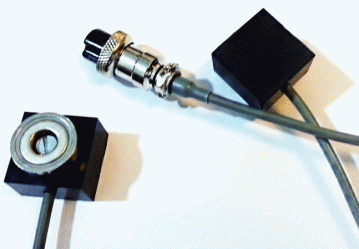
Figure 4.2. Capacitive Accelerometers AD 1, assembled.
चित्र 4.2. कैपेसिटिव एक्सेलेरोमीटर AD1, LLC "किनेमेटिक्स" (वाइब्रोमेरा) द्वारा निर्मित।
It should be noted that these sensors, which include widely used market boards of capacitive accelerometers ADXL 345 (see Figure 4.3), have several significant advantages over piezo accelerometers. Specifically, they are 4 to 8 times cheaper with similar technical characteristics. Moreover, they do not require the use of costly and finicky charge amplifiers needed for piezo accelerometers.
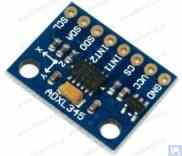
Figure 4.3. Capacitive accelerometer board ADXL 345.
In this case, the initial sensor signal, proportional to vibrational acceleration, is accordingly transformed into a signal proportional to vibrational velocity or displacement. The procedure of double integration of the vibration signal is particularly relevant when using accelerometers as part of the measuring systems for low-speed balancing machines, where the lower rotor rotation frequency range during balancing can reach 120 rpm and below. When using capacitive accelerometers in the measuring systems of balancing machines, it should be considered that after integration, their signals may contain low-frequency interference, manifesting in the frequency range from 0.5 to 3 Hz. This may limit the lower frequency range of balancing on machines intended to use these sensors.
4.1.2. Vibration Velocity Sensors
4.1.2.1. Inductive Vibration Velocity Sensors.
These sensors include an inductive coil and a magnetic core. When the coil vibrates relative to a stationary core (or the core relative to a stationary coil), an EMF is induced in the coil, the voltage of which is directly proportional to the vibration velocity of the movable element of the sensor. The conversion coefficients (Кпр) of inductive sensors are usually quite high, reaching several tens or even hundreds of mV/mm/sec. In particular, the conversion coefficient of the Schenck model T77 sensor is 80 mV/mm/sec, and for the IRD Mechanalysis model 544M sensor, it is 40 mV/mm/sec. In some cases (for example, in Schenck balancing machines), special highly sensitive inductive vibration velocity sensors with a mechanical amplifier are used, where Кпр can exceed 1000 mV/mm/sec. If inductive vibration velocity sensors are used in the measuring systems of balancing machines, hardware integration of the electrical signal proportional to vibration velocity can also be performed, converting it into a signal proportional to vibration displacement.
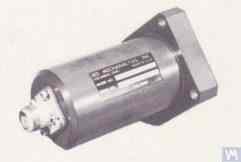
Figure 4.4. Model 544M sensor by IRD Mechanalysis.
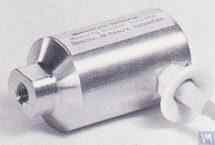
Figure 4.5. Model T77 sensor by Schenck
It should be noted that due to the labor intensity of their production, inductive vibration velocity sensors are quite scarce and expensive items. Therefore, despite the obvious advantages of these sensors, amateur manufacturers of balancing machines use them very rarely.
4.2. Phase Angle Sensors
संतुलित रोटर के घूर्णन कोण के साथ कंपन मापन प्रक्रिया को सिंक्रनाइज़ करने के लिए, लेज़र (फोटोइलेक्ट्रिक) या प्रेरक सेंसर जैसे फेज़ एंगल सेंसर का उपयोग किया जाता है। ये सेंसर घरेलू और अंतर्राष्ट्रीय दोनों निर्माताओं द्वारा विभिन्न डिज़ाइनों में निर्मित किए जाते हैं। इन सेंसरों की कीमत लगभग 40 से 200 डॉलर तक काफी भिन्न हो सकती है। ऐसे ही एक उपकरण का उदाहरण "डायमेक्स" द्वारा निर्मित फेज़ एंगल सेंसर है, जिसे चित्र 4.11 में दिखाया गया है।.
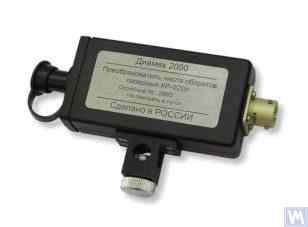
चित्र 4.11: "डायमेक्स" द्वारा निर्मित फेज एंगल सेंसर"
एक अन्य उदाहरण के रूप में, चित्र 4.12 एलएलसी "किनेमेटिक्स" (वाइब्रोमेरा) द्वारा कार्यान्वित एक मॉडल को दर्शाता है, जो चरण कोण सेंसर के रूप में चीन में निर्मित DT 2234C मॉडल के लेजर टैकोमीटर का उपयोग करता है।. The obvious advantages of this sensor include:
- A wide operating range, allowing measurement of rotor rotation frequency from 2.5 to 99,999 revolutions per minute, with a resolution of no less than one revolution;
- Digital display;
- Ease of setting up the tachometer for measurements;
- Affordability and low market cost;
- Relative simplicity of modification for integration into the measuring system of a balancing machine.
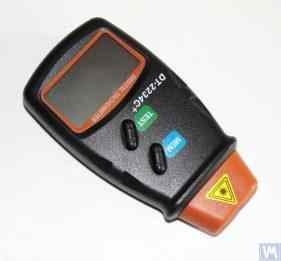
Figure 4.12: Laser Tachometer Model DT 2234C
कुछ मामलों में, जब किसी कारण से ऑप्टिकल लेजर सेंसर का उपयोग अवांछनीय हो, तो उन्हें प्रेरणिक गैर-संपर्क विस्थापन सेंसर से प्रतिस्थापित किया जा सकता है, जैसे कि पहले उल्लेखित ISAN E41A मॉडल या अन्य निर्माताओं के समान उत्पाद।
4.3. कंपन सेंसर में सिग्नल प्रोसेसिंग विशेषताएँ
संतुलन उपकरणों में कंपन संकेत के घूर्णी घटक के आयाम और चरण के सटीक माप के लिए, हार्डवेयर और सॉफ़्टवेयर प्रसंस्करण उपकरणों के संयोजन का आमतौर पर उपयोग किया जाता है। ये उपकरण सक्षम करते हैं:
- सेंसर के एनालॉग सिग्नल का ब्रॉडबैंड हार्डवेयर फ़िल्टरिंग;
- सेंसर के एनालॉग सिग्नल का प्रवर्धन;
- एनालॉग सिग्नल का एकीकरण और/या दोहरा एकीकरण (यदि आवश्यक हो);
- ट्रैकिंग फ़िल्टर का उपयोग करके एनालॉग सिग्नल की नैरोबैंड फ़िल्टरिंग;
- सिग्नल का एनालॉग-टू-डिजिटल रूपांतरण;
- डिजिटल सिग्नल की तुल्यकालिक फ़िल्टरिंग;
- डिजिटल सिग्नल का हार्मोनिक विश्लेषण.
4.3.1. ब्रॉडबैंड सिग्नल फ़िल्टरिंग
यह प्रक्रिया कंपन सेंसर सिग्नल को डिवाइस की आवृत्ति सीमा के निचले और ऊपरी दोनों छोरों पर उत्पन्न होने वाले संभावित अवरोधों से मुक्त करने के लिए आवश्यक है। बैलेंसिंग मशीन के मापन उपकरण के लिए बैंड-पास फ़िल्टर की निचली सीमा 2-3 हर्ट्ज़ और ऊपरी सीमा 50 (100) हर्ट्ज़ निर्धारित करना उचित है। "निचली" फ़िल्टरिंग विभिन्न प्रकार के सेंसर मापन एम्पलीफायरों के आउटपुट पर उत्पन्न होने वाले निम्न-आवृत्ति शोर को दबाने में सहायक होती है। "ऊपरी" फ़िल्टरिंग संयोजन आवृत्तियों और मशीन के अलग-अलग यांत्रिक घटकों के संभावित अनुनादी कंपनों के कारण होने वाले अवरोधों को समाप्त करती है।.
4.3.2. सेंसर से एनालॉग सिग्नल का प्रवर्धन
यदि बैलेंसिंग मशीन के मापन प्रणाली की संवेदनशीलता बढ़ाने की आवश्यकता हो, तो कंपन सेंसर से मापन इकाई के इनपुट तक जाने वाले संकेतों को प्रवर्धित किया जा सकता है। स्थिर लाभ वाले मानक प्रवर्धन और बहु-चरण प्रवर्धन, जिनका लाभ सेंसर से प्राप्त वास्तविक संकेत स्तर के आधार पर प्रोग्राम द्वारा बदला जा सकता है, दोनों का उपयोग किया जा सकता है। प्रोग्रामेबल बहु-चरण प्रवर्धन का एक उदाहरण LLC "L-Card" द्वारा निर्मित E154 या E14-140 जैसे वोल्टेज मापन कन्वर्टर्स में लगे प्रवर्धन हैं।.
4.3.3. एकीकरण
जैसा कि पहले उल्लेख किया गया है, संतुलन मशीनों की माप प्रणालियों में कंपन सेंसर संकेतों के हार्डवेयर एकीकरण और/या दोहरे एकीकरण की सिफारिश की जाती है। इस प्रकार, कंपन-त्वरण के समानुपातिक प्रारंभिक एक्सेलेरोमीटर संकेत को कंपन-गति (एकीकरण) या कंपन-विस्थापन (दोहरा एकीकरण) के समानुपातिक संकेत में परिवर्तित किया जा सकता है। इसी तरह, एकीकरण के बाद कंपन-गति सेंसर संकेत को कंपन-विस्थापन के समानुपातिक संकेत में परिवर्तित किया जा सकता है।
4.3.4. ट्रैकिंग फ़िल्टर का उपयोग करके एनालॉग सिग्नल की नैरोबैंड फ़िल्टरिंग
संतुलन मशीनों के मापन प्रणालियों में कंपन सिग्नल प्रोसेसिंग की गुणवत्ता में सुधार और हस्तक्षेप को कम करने के लिए नैरोबैंड ट्रैकिंग फिल्टर का उपयोग किया जा सकता है। इन फिल्टरों की केंद्रीय आवृत्ति रोटर के घूर्णन सेंसर सिग्नल का उपयोग करके संतुलित रोटर की घूर्णन आवृत्ति के अनुरूप स्वचालित रूप से समायोजित हो जाती है। ऐसे फिल्टर बनाने के लिए "MAXIM" द्वारा निर्मित MAX263, MAX264, MAX267 और MAX268 जैसे आधुनिक एकीकृत परिपथों का उपयोग किया जा सकता है।.
4.3.5. सिग्नलों का एनालॉग-टू-डिजिटल रूपांतरण
एनालॉग-टू-डिजिटल रूपांतरण एक महत्वपूर्ण प्रक्रिया है जो आयाम और चरण के मापन के दौरान कंपन सिग्नल प्रोसेसिंग की गुणवत्ता में सुधार सुनिश्चित करती है। यह प्रक्रिया सभी आधुनिक बैलेंसिंग मशीन मापन प्रणालियों में लागू की जाती है। ऐसे एडीसी के प्रभावी कार्यान्वयन का एक उदाहरण एलएलसी "एल-कार्ड" द्वारा निर्मित वोल्टेज मापन कन्वर्टर टाइप E154 या E14-140 है, जिसका उपयोग एलएलसी "किनेमेटिक्स" (वाइब्रोमेरा) द्वारा निर्मित कई बैलेंसिंग मशीन मापन प्रणालियों में किया जाता है। इसके अतिरिक्त, एलएलसी "किनेमेटिक्स" (वाइब्रोमेरा) को "माइक्रोचिप" द्वारा निर्मित PIC18F4620 माइक्रोकंट्रोलर और इसी तरह के उपकरणों पर आधारित सस्ते माइक्रोप्रोसेसर सिस्टम का उपयोग करने का अनुभव है।.
4.1.2.2. पीजोइलेक्ट्रिक एक्सेलेरोमीटर पर आधारित कंपन वेग सेंसर
इस प्रकार का सेंसर एक मानक पीजोइलेक्ट्रिक एक्सेलेरोमीटर से इस मायने में भिन्न होता है कि इसके आवरण में एक अंतर्निर्मित चार्ज एम्पलीफायर और इंटीग्रेटर होता है, जो इसे कंपन वेग के समानुपाती सिग्नल उत्पन्न करने में सक्षम बनाता है। उदाहरण के लिए, घरेलू निर्माताओं (ZETLAB कंपनी और LLC "Vibropribor") द्वारा निर्मित पीजोइलेक्ट्रिक कंपन वेग सेंसर चित्र 4.6 और 4.7 में दिखाए गए हैं।.
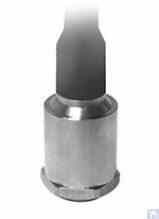
Figure 4.6. Model AV02 sensor by ZETLAB (Russia)
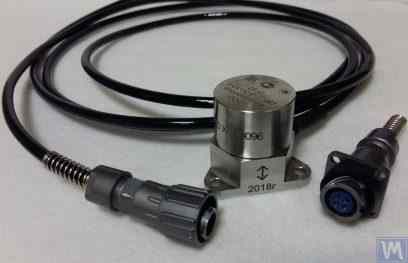
चित्र 4.7. एलएलसी "वाइब्रोप्रिबोर" द्वारा निर्मित मॉडल डीवीएसटी 2 सेंसर।"
Such sensors are manufactured by various producers (both domestic and foreign) and are currently widely used, especially in portable vibration equipment. The cost of these sensors is quite high and can reach 20,000 to 30,000 rubles each, even from domestic manufacturers.
4.1.3. Displacement Sensors
संतुलन मशीनों के मापन प्रणालियों में, गैर-संपर्क विस्थापन सेंसर – संधारित्र या प्रेरक – का भी उपयोग किया जा सकता है। ये सेंसर स्थिर मोड में कार्य कर सकते हैं, जिससे 0 हर्ट्ज़ से शुरू होने वाली कंपन प्रक्रियाओं का रिकॉर्ड रखा जा सकता है। इनका उपयोग 120 आरपीएम और उससे कम घूर्णन गति वाले कम गति वाले रोटरों के संतुलन के मामले में विशेष रूप से प्रभावी हो सकता है। इन सेंसरों के रूपांतरण गुणांक 1000 mV/mm और उससे अधिक तक पहुँच सकते हैं, जो अतिरिक्त प्रवर्धन के बिना भी विस्थापन को मापने में उच्च सटीकता और रिज़ॉल्यूशन प्रदान करते हैं। इन सेंसरों का एक स्पष्ट लाभ इनकी अपेक्षाकृत कम लागत है, जो कुछ घरेलू निर्माताओं के लिए 1000 रूबल से अधिक नहीं होती है। संतुलन मशीनों में इन सेंसरों का उपयोग करते समय, यह ध्यान रखना महत्वपूर्ण है कि सेंसर के संवेदनशील तत्व और कंपन करने वाली वस्तु की सतह के बीच नाममात्र कार्यशील अंतर सेंसर कॉइल के व्यास द्वारा सीमित होता है। उदाहरण के लिए, चित्र 4.8 में दिखाए गए सेंसर, "TEKO" द्वारा निर्मित ISAN E41A मॉडल के लिए, निर्दिष्ट कार्यशील अंतराल आमतौर पर 3.8 से 4 मिमी होता है, जो कंपन करने वाली वस्तु के विस्थापन को ±2.5 मिमी की सीमा में मापने की अनुमति देता है।.
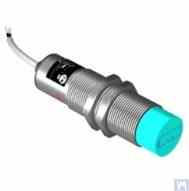
Figure 4.8. Inductive Displacement Sensor Model ISAN E41A by TEKO (Russia)
4.1.4. Force Sensors
As previously noted, force sensors are used in the measurement systems installed on Hard Bearing balancing machines. These sensors, particularly due to their simplicity of manufacture and relatively low cost, are commonly piezoelectric force sensors. Examples of such sensors are shown in Figures 4.9 and 4.10.
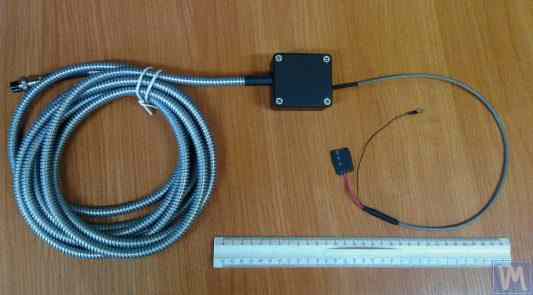
Figure 4.9. Force Sensor SD 1 by Kinematika LLC
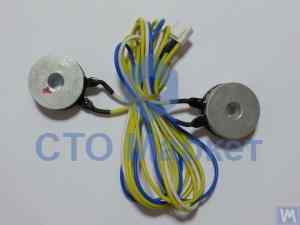
चित्र 4.10: ऑटोमोटिव बैलेंसिंग मशीनों के लिए फोर्स सेंसर, "एसटीओ मार्केट" द्वारा बेचा गया।"
Strain gauge force sensors, which are manufactured by a wide range of domestic and foreign producers, can also be used to measure relative deformations in the supports of Hard Bearing balancing machines.
4.4. संतुलन मशीन, "बैलेंससेट 2" की मापन प्रणाली की कार्यात्मक योजना"
"बैलेंसेट 2" मापन प्रणाली, बैलेंसिंग मशीनों में मापन और गणना कार्यों को एकीकृत करने का एक आधुनिक दृष्टिकोण प्रस्तुत करती है। यह प्रणाली प्रभाव गुणांक विधि का उपयोग करके सुधारात्मक भार की स्वचालित गणना प्रदान करती है और इसे विभिन्न मशीन विन्यासों के लिए अनुकूलित किया जा सकता है।.
इस प्रणाली में सिग्नल कंडीशनिंग, एनालॉग-टू-डिजिटल रूपांतरण, डिजिटल सिग्नल प्रोसेसिंग और स्वचालित गणना एल्गोरिदम शामिल हैं। यह प्रणाली दो-स्तरीय और बहु-स्तरीय संतुलन दोनों स्थितियों को उच्च परिशुद्धता के साथ संभाल सकती है।.
4.5. Calculation of Parameters of Correction Weights Used in Rotor Balancing
सुधारात्मक भारों की गणना प्रभाव गुणांक विधि पर आधारित है, जो यह निर्धारित करती है कि रोटर विभिन्न तलों में परीक्षण भारों के प्रति कैसी प्रतिक्रिया देता है। यह विधि सभी आधुनिक संतुलन प्रणालियों का मूलभूत आधार है और कठोर एवं लचीले दोनों प्रकार के रोटरों के लिए सटीक परिणाम प्रदान करती है।.
4.5.1. Task of Balancing Dual-support Rotors and Methods of its Resolution
दोहरे समर्थन वाले रोटरों (सबसे आम विन्यास) के लिए, संतुलन कार्य में दो सुधारात्मक भार निर्धारित करना शामिल है - प्रत्येक सुधार तल के लिए एक। प्रभाव गुणांक विधि निम्नलिखित दृष्टिकोण का उपयोग करती है:
- प्रारंभिक माप (रन 0): बिना किसी परीक्षण भार के कंपन को मापें
- पहला परीक्षण (रन 1): प्लेन 1 में ज्ञात परीक्षण भार जोड़ें, प्रतिक्रिया मापें
- दूसरा परीक्षण (रन 2): परीक्षण भार को तल 2 पर ले जाएं, प्रतिक्रिया मापें
- गणना: सॉफ्टवेयर मापी गई प्रतिक्रियाओं के आधार पर स्थायी सुधार भार की गणना करता है।
गणितीय आधार में परीक्षण भार के प्रभावों को दोनों तलों में आवश्यक सुधारों से संबंधित रैखिक समीकरणों की एक प्रणाली को एक साथ हल करना शामिल है।.
आंकड़े 3.26 और 3.27 खराद बेड का उपयोग करने के उदाहरण दिखाएं, जिसके आधार पर ऑगर्स को संतुलित करने के लिए एक विशेष हार्ड बेयरिंग मशीन और बेलनाकार रोटर के लिए एक सार्वभौमिक सॉफ्ट बेयरिंग बैलेंसिंग मशीन का निर्माण किया गया था। DIY निर्माताओं के लिए, ऐसे समाधान न्यूनतम समय और लागत के साथ संतुलन मशीन के लिए एक कठोर समर्थन प्रणाली बनाने की अनुमति देते हैं, जिस पर विभिन्न प्रकार के समर्थन स्टैंड (हार्ड बेयरिंग और सॉफ्ट बेयरिंग दोनों) लगाए जा सकते हैं। इस मामले में निर्माता के लिए मुख्य कार्य मशीन गाइड की ज्यामितीय परिशुद्धता सुनिश्चित करना (और यदि आवश्यक हो तो बहाल करना) है जिस पर समर्थन स्टैंड आधारित होंगे। DIY उत्पादन स्थितियों में, गाइड की आवश्यक ज्यामितीय सटीकता को बहाल करने के लिए आमतौर पर बारीक स्क्रैपिंग का उपयोग किया जाता है।
चित्र 3.28 दो चैनलों से बने एक इकट्ठे बिस्तर का एक संस्करण दिखाता है। इस बिस्तर के निर्माण में, अलग किए जा सकने वाले बोल्ट वाले कनेक्शन का उपयोग किया जाता है, जिससे अतिरिक्त तकनीकी संचालन के बिना असेंबली के दौरान बिस्तर के विरूपण को कम से कम या पूरी तरह से समाप्त किया जा सकता है। निर्दिष्ट बिस्तर के गाइड की उचित ज्यामितीय सटीकता सुनिश्चित करने के लिए, उपयोग किए गए चैनलों के शीर्ष फ्लैंग्स की यांत्रिक प्रसंस्करण (पीसना, बारीक मिलिंग) की आवश्यकता हो सकती है।
आंकड़े 3.29 और 3.30 वेल्डेड बेड की विविधताएं भी दो चैनलों से बनी हैं। ऐसे बेड के लिए विनिर्माण प्रौद्योगिकी में कई अतिरिक्त संचालन की आवश्यकता हो सकती है, जैसे वेल्डिंग के दौरान होने वाले आंतरिक तनाव को दूर करने के लिए गर्मी उपचार। इकट्ठे बेड के साथ, वेल्डेड बेड के गाइड की उचित ज्यामितीय सटीकता सुनिश्चित करने के लिए, उपयोग किए गए चैनलों के शीर्ष फ्लैंग्स की यांत्रिक प्रसंस्करण (पीसना, बारीक मिलिंग) की योजना बनाई जानी चाहिए।
4.5.2. Methodology for Dynamic Balancing of Multi-support Rotors
मल्टी-सपोर्ट रोटर्स (तीन या चार बेयरिंग पॉइंट्स) के लिए अधिक जटिल बैलेंसिंग प्रक्रियाओं की आवश्यकता होती है। प्रत्येक सपोर्ट पॉइंट समग्र डायनामिक व्यवहार में योगदान देता है, और करेक्शन में सभी तलों के बीच की परस्पर क्रियाओं को ध्यान में रखना आवश्यक है।.
यह पद्धति दो-तल दृष्टिकोण को निम्नलिखित तरीकों से विस्तारित करती है:
- सभी सपोर्ट बिंदुओं पर कंपन का मापन
- कई परीक्षण भार स्थितियों का उपयोग करना
- रैखिक समीकरणों की बड़ी प्रणालियों को हल करना
- सुधार भार वितरण को अनुकूलित करना
कार्डन शाफ्ट और इसी तरह के लंबे रोटरों के लिए, यह दृष्टिकोण आमतौर पर आईएसओ गुणवत्ता ग्रेड जी6.3 या उससे बेहतर के अनुरूप अवशिष्ट असंतुलन स्तर प्राप्त करता है।.
4.5.3. Calculators for Balancing Multi-support Rotors
तीन और चार सपोर्ट वाले रोटर कॉन्फ़िगरेशन के लिए विशेष गणना एल्गोरिदम विकसित किए गए हैं। ये कैलकुलेटर Balanset-4 सॉफ़्टवेयर में कार्यान्वित किए गए हैं और जटिल रोटर ज्यामिति को स्वचालित रूप से संभाल सकते हैं।.
ये कैलकुलेटर निम्नलिखित बातों का ध्यान रखते हैं:
- परिवर्तनीय समर्थन कठोरता
- सुधार तलों के बीच क्रॉस-युग्मन
- सुगमता के लिए भार स्थान का अनुकूलन
- गणना किए गए परिणामों का सत्यापन
5. Recommendations for Checking the Operation and Accuracy of Balancing Machines
किसी बैलेंसिंग मशीन की सटीकता और विश्वसनीयता कई कारकों पर निर्भर करती है, जिनमें उसके यांत्रिक घटकों की ज्यामितीय सटीकता, सपोर्ट की गतिशील विशेषताएं और मापन प्रणाली की परिचालन क्षमता शामिल हैं। इन मापदंडों का नियमित सत्यापन बैलेंसिंग की गुणवत्ता को बनाए रखता है और उत्पादन को प्रभावित करने से पहले संभावित समस्याओं की पहचान करने में मदद करता है।.
5.1. Checking the Geometric Accuracy of the Machine
ज्यामितीय सटीकता सत्यापन में सपोर्ट के संरेखण, गाइड की समानांतरता और स्पिंडल असेंबली की संकेंद्रता की जाँच शामिल है। सटीकता बनाए रखने के लिए ये जाँचें प्रारंभिक सेटअप के दौरान और संचालन के दौरान समय-समय पर की जानी चाहिए।.
5.2. Checking the Dynamic Characteristics of the Machine
गतिशील विशेषताओं के सत्यापन में सपोर्ट और फ्रेम घटकों की प्राकृतिक आवृत्तियों को मापना शामिल है ताकि यह सुनिश्चित किया जा सके कि वे परिचालन आवृत्तियों से उचित रूप से अलग हैं। इससे अनुनाद संबंधी समस्याओं को रोका जा सकता है जो संतुलन सटीकता को प्रभावित कर सकती हैं।.
5.3. Checking the Operational Capability of the Measuring System
मापन प्रणाली सत्यापन में सेंसर अंशांकन, चरण संरेखण सत्यापन और सिग्नल प्रोसेसिंग सटीकता जांच शामिल हैं। यह सभी परिचालन गतियों पर कंपन आयाम और चरण के विश्वसनीय मापन को सुनिश्चित करता है।.
5.4. आईएसओ 20076-2007 के अनुसार सटीकता विशेषताओं की जाँच करना
ISO 20076-2007 कैलिब्रेटेड टेस्ट रोटर्स का उपयोग करके बैलेंसिंग मशीन की सटीकता को सत्यापित करने के लिए मानकीकृत प्रक्रियाएं प्रदान करता है। ये प्रक्रियाएं अंतरराष्ट्रीय स्तर पर मान्यता प्राप्त मानकों के विरुद्ध मशीन के प्रदर्शन को प्रमाणित करने में सहायक होती हैं।.
Literature
- रेशेतोव डीएन (संपादक)। "धातु-काटने वाली मशीन औजारों के विवरण और क्रियाविधियाँ।" मॉस्को: माशिनोस्ट्रोएनी, 1972।.
- केलनबर्गर डब्ल्यू. "बेलनाकार सतहों की सर्पिल पिसाई।" मशीनरी, 1963।.
- आईएसओ 18855-94 (आईएसओ 281-89) "रोलिंग बियरिंग - डायनेमिक लोड रेटिंग और रेटिंग लाइफ।""
- आईएसओ 17383-73 "फ्लैट ड्राइव बेल्ट के लिए पुली।""
- आईएसओ 1940-1-2007 "कंपन। कठोर रोटरों की संतुलन गुणवत्ता के लिए आवश्यकताएँ।""
- आईएसओ 20076-2007 "संतुलन मशीन सटीकता सत्यापन प्रक्रियाएं।""
Appendix 1: Algorithm for Calculating Parameters of Balancing for Three Support Shafts
तीन-समर्थन रोटर संतुलन के लिए तीन अज्ञात राशियों वाले तीन समीकरणों की प्रणाली को हल करना आवश्यक है। यह परिशिष्ट तीन सुधार तलों में सुधारात्मक भार निर्धारित करने के लिए गणितीय आधार और चरण-दर-चरण गणना प्रक्रिया प्रदान करता है।.
A1.1. गणितीय आधार
तीन सपोर्ट वाले रोटर के लिए, प्रभाव गुणांक मैट्रिक्स परीक्षण भार प्रभावों को प्रत्येक बेयरिंग स्थान पर कंपन प्रतिक्रियाओं से संबंधित करता है। समीकरण प्रणाली का सामान्य रूप इस प्रकार है:
[V₂] = [A₂₁ A₂₂ A₂₃] [W₂]
[V₃] = [A₃₁ A₃₂ A₃₃] [W₃]
कहाँ:
- V₁, V₂, V₃ सपोर्ट 1, 2 और 3 पर कंपन सदिश
- W₁, W₂, W₃ तल 1, 2 और 3 में सुधार भार
- Aᵢⱼ - भार j और आधार i पर कंपन के बीच संबंध स्थापित करने वाले प्रभाव गुणांक
A1.2. गणना प्रक्रिया
- प्रारंभिक माप: बिना परीक्षण भार के तीनों आधारों पर कंपन आयाम और चरण को रिकॉर्ड करें।
- परीक्षण भार अनुक्रम: ज्ञात परीक्षण भार को क्रमिक रूप से प्रत्येक सुधार तल पर लागू करें और कंपन परिवर्तनों को रिकॉर्ड करें।
- प्रभाव गुणांक की गणना: यह निर्धारित करें कि प्रत्येक परीक्षण भार प्रत्येक सपोर्ट पर कंपन को कैसे प्रभावित करता है।
- मैट्रिक्स समाधान: इष्टतम सुधार भार ज्ञात करने के लिए समीकरणों की प्रणाली को हल करें।
- वजन रखने की जगह: निर्धारित कोणों पर परिकलित भार स्थापित करें।
- सत्यापन: सुनिश्चित करें कि अवशिष्ट कंपन विनिर्देशों के अनुरूप है।
A1.3. तीन-समर्थन वाले रोटरों के लिए विशेष विचार
तीन-समर्थन विन्यास आमतौर पर लंबे कार्डन शाफ्ट के लिए उपयोग किए जाते हैं जहां अत्यधिक विक्षेपण को रोकने के लिए मध्यवर्ती समर्थन की आवश्यकता होती है। मुख्य विचारणीय बिंदु इस प्रकार हैं:
- मध्यवर्ती सपोर्ट की कठोरता समग्र रोटर गतिशीलता को प्रभावित करती है।
- सटीक परिणामों के लिए समर्थन संरेखण महत्वपूर्ण है।
- परीक्षण भार की मात्रा से सभी आधारों पर मापने योग्य प्रतिक्रिया उत्पन्न होनी चाहिए।
- तलों के बीच क्रॉस-युग्मन के लिए सावधानीपूर्वक विश्लेषण की आवश्यकता होती है।
Appendix 2: Algorithm for Calculating Parameters of Balancing for Four Support Shafts
चार-समर्थन रोटर संतुलन सबसे जटिल सामान्य विन्यास का प्रतिनिधित्व करता है, जिसके लिए 4x4 मैट्रिक्स प्रणाली के समाधान की आवश्यकता होती है। यह विन्यास कागज मिल रोल, कपड़ा मशीनरी शाफ्ट और भारी औद्योगिक रोटर जैसे बहुत लंबे रोटरों के लिए विशिष्ट है।.
A2.1. विस्तारित गणितीय मॉडल
चार-समर्थन प्रणाली चार बेयरिंग स्थानों को ध्यान में रखते हुए अतिरिक्त समीकरणों के साथ तीन-समर्थन मॉडल का विस्तार करती है:
[V₂] = [A₂₁ A₂₂ A₂₃ A₂₄] [W₂]
[V₃] = [A₃₁ A₃₂ A₃₃ A₃₄] [W₃]
[V₄] = [A₄₁ A₄₂ A₄₃ A₄₄] [W₄]
A2.2. अनुक्रमिक परीक्षण भार प्रक्रिया
चार-समर्थन प्रक्रिया के लिए पांच मापन चरणों की आवश्यकता होती है:
- रन 0: चारों आधारों पर प्रारंभिक माप
- रन 1: प्लेन 1 में परीक्षण भार रखें, सभी सपोर्टों को मापें
- रन 2: प्लेन 2 में परीक्षण भार रखें, सभी सपोर्टों को मापें
- रन 3: तल 3 में परीक्षण भार रखें, सभी आधारों को मापें
- रन 4: तल 4 में परीक्षण भार रखें, सभी आधारों को मापें
A2.3. अनुकूलन संबंधी विचार
चार-समर्थन संतुलन अक्सर कई वैध समाधानों की अनुमति देता है। अनुकूलन प्रक्रिया निम्नलिखित बातों पर विचार करती है:
- कुल सुधार भार द्रव्यमान को न्यूनतम करना
- वजन रखने के लिए सुलभ स्थानों को सुनिश्चित करना
- विनिर्माण सहनशीलता और लागतों के बीच संतुलन बनाना
- निर्दिष्ट अवशिष्ट कंपन सीमाओं को पूरा करना
Appendix 3: Guide to Using the Balancer Calculator
बैलेंससेट बैलेंसर कैलकुलेटर परिशिष्ट 1 और 2 में वर्णित जटिल गणितीय प्रक्रियाओं को स्वचालित कर देता है। यह गाइड DIY बैलेंसिंग मशीनों के साथ कैलकुलेटर का प्रभावी ढंग से उपयोग करने के लिए व्यावहारिक निर्देश प्रदान करता है।.
A3.1. सॉफ्टवेयर सेटअप और कॉन्फ़िगरेशन
- मशीन की परिभाषा: मशीन की ज्यामिति, सपोर्ट लोकेशन और करेक्शन प्लेन को परिभाषित करें।
- सेंसर अंशांकन: सेंसर के अभिविन्यास और अंशांकन कारकों को सत्यापित करें
- परीक्षण के लिए वजन तैयार करना: रोटर की विशेषताओं के आधार पर उपयुक्त परीक्षण भार की गणना करें।
- सुरक्षा सत्यापन: सुरक्षित परिचालन गति और भार संलग्न करने के तरीकों की पुष्टि करें।
A3.2. मापन अनुक्रम
यह कैलकुलेटर माप की गुणवत्ता पर वास्तविक समय में प्रतिक्रिया और सिग्नल-टू-शोर अनुपात में सुधार के लिए सुझावों के साथ उपयोगकर्ता को माप अनुक्रम के माध्यम से मार्गदर्शन करता है।.
A3.3. परिणामों की व्याख्या
यह कैलकुलेटर कई आउटपुट फॉर्मेट प्रदान करता है:
- सुधार आवश्यकताओं को दर्शाने वाले ग्राफिकल वेक्टर डिस्प्ले
- संख्यात्मक भार और कोण विनिर्देश
- गुणवत्ता मापदंड और विश्वास संकेतक
- मापन सटीकता में सुधार के लिए सुझाव
A3.4. सामान्य समस्याओं का निवारण
DIY मशीनों के साथ कैलकुलेटर का उपयोग करते समय आने वाली सामान्य समस्याएं और उनके समाधान:
- परीक्षण के दौरान वजन की अपर्याप्त प्रतिक्रिया: परीक्षण भार की मात्रा बढ़ाएँ या सेंसर माउंटिंग की जाँच करें
- असंगत माप: यांत्रिक अखंडता की पुष्टि करें, अनुनाद स्थितियों की जाँच करें
- खराब सुधार परिणाम: कोण माप की सटीकता सत्यापित करें, क्रॉस-कपलिंग प्रभावों की जाँच करें
- सॉफ्टवेयर त्रुटियाँ: सेंसर कनेक्शन की जांच करें, इनपुट पैरामीटर सत्यापित करें, स्थिर आरपीएम सुनिश्चित करें
लेख के लेखक: फेल्डमैन वैलेरी डेविडोविच
संपादक और अनुवादक: निकोलाई एंड्रीविच शेल्कोवेंको
संभावित अनुवाद त्रुटियों के लिए मैं क्षमा चाहता हूँ।
